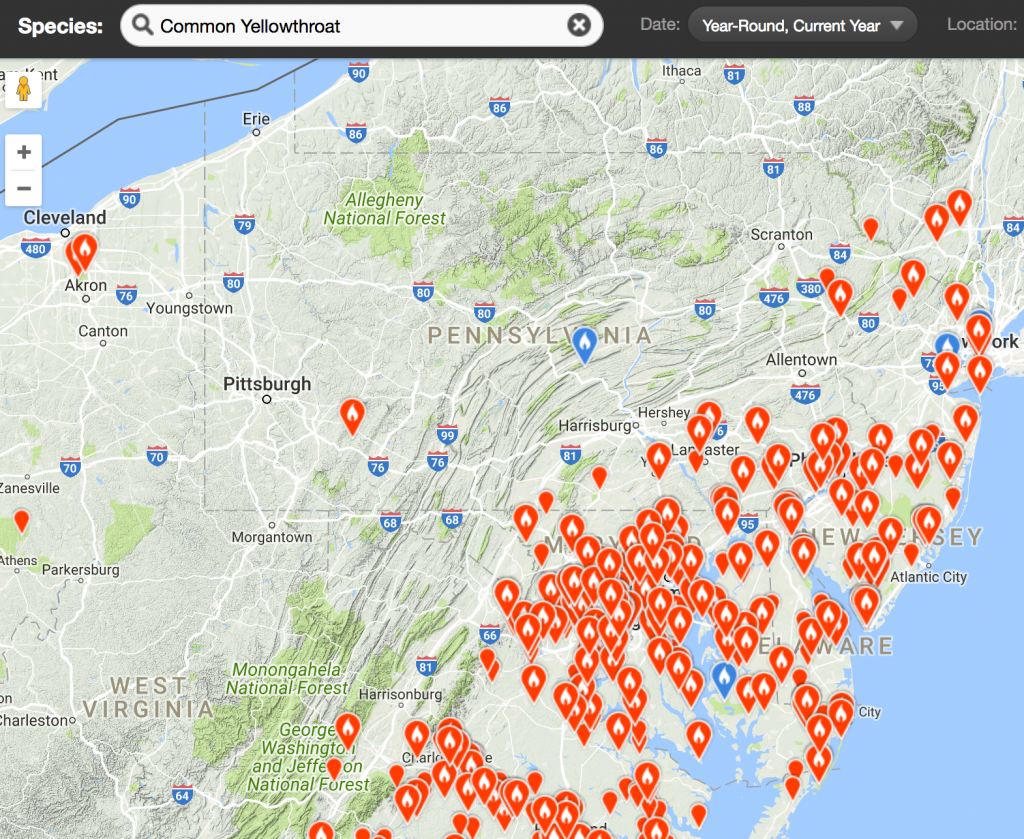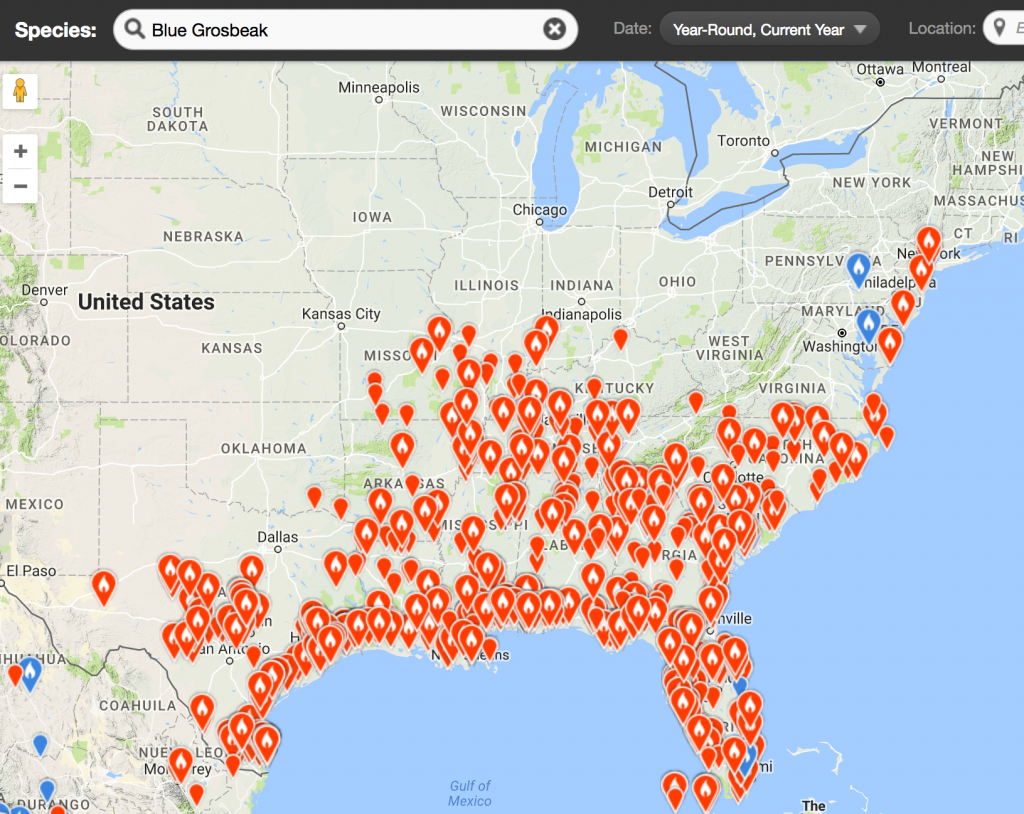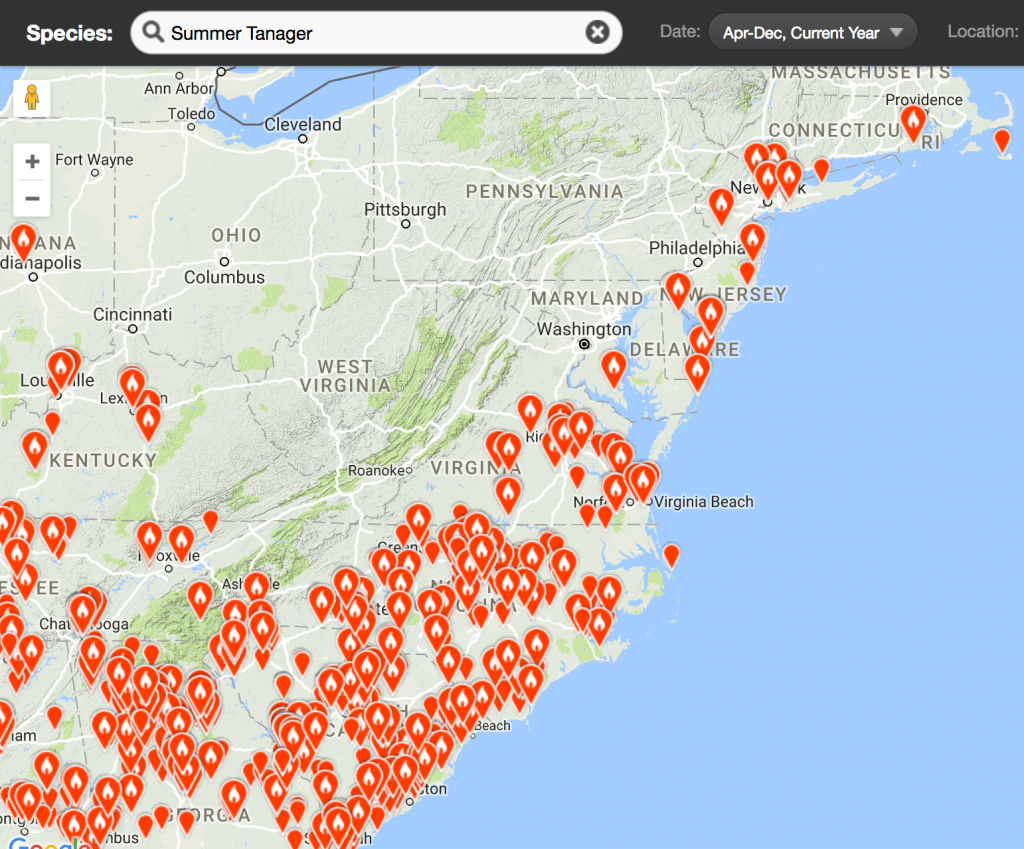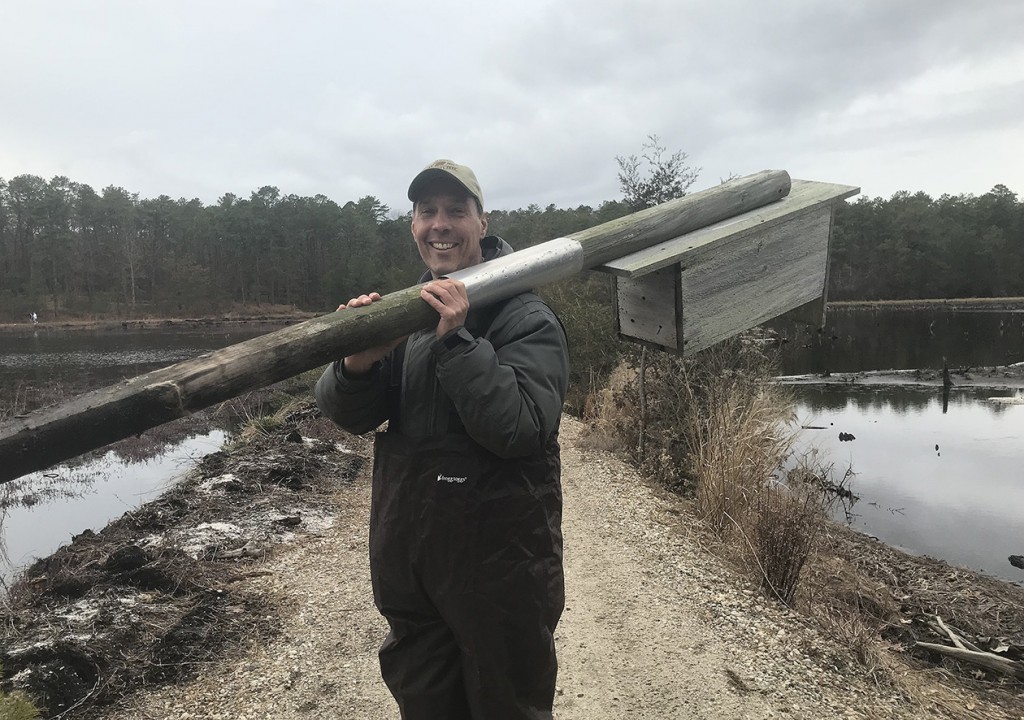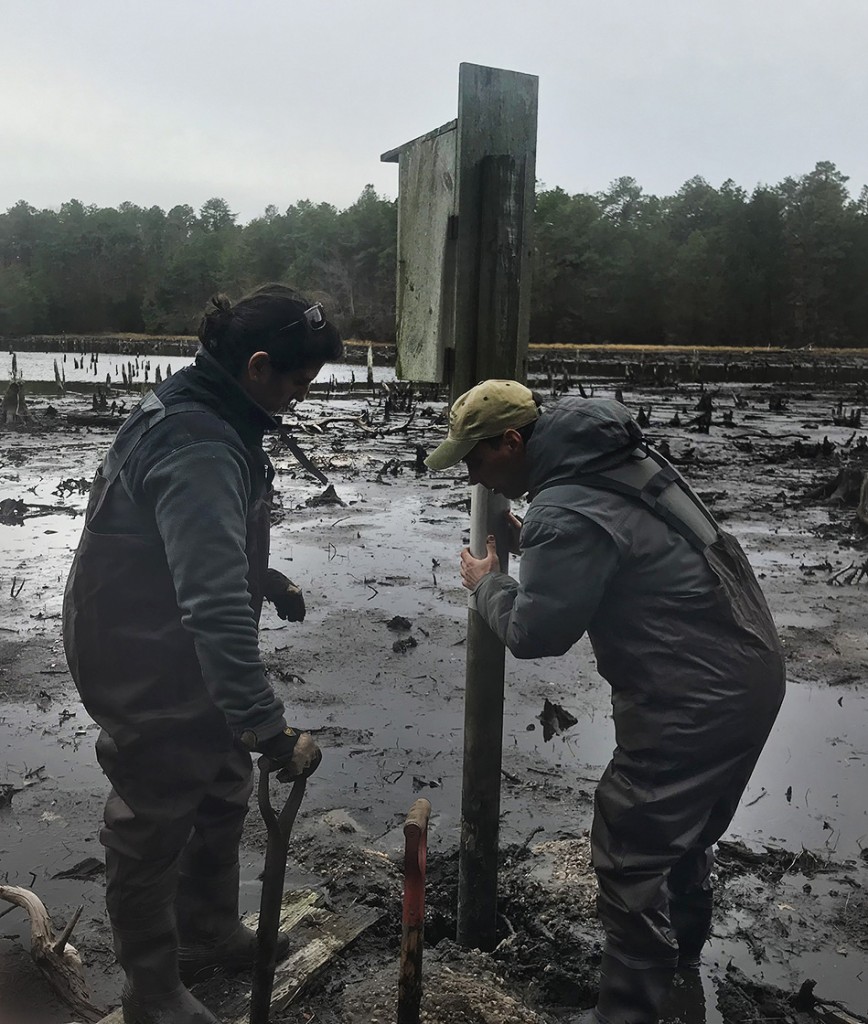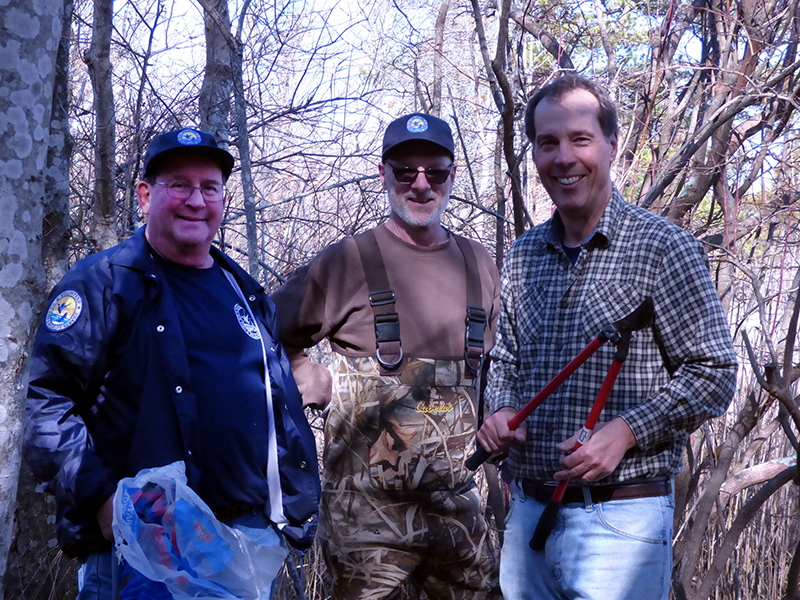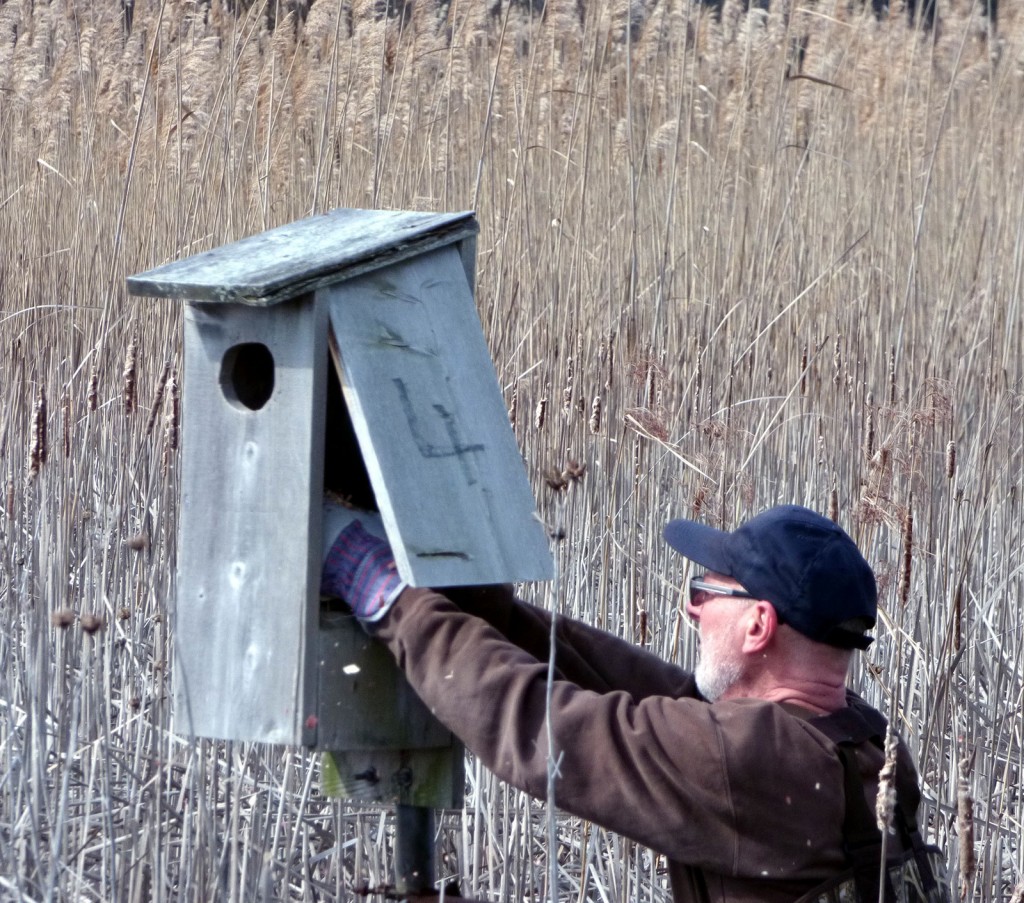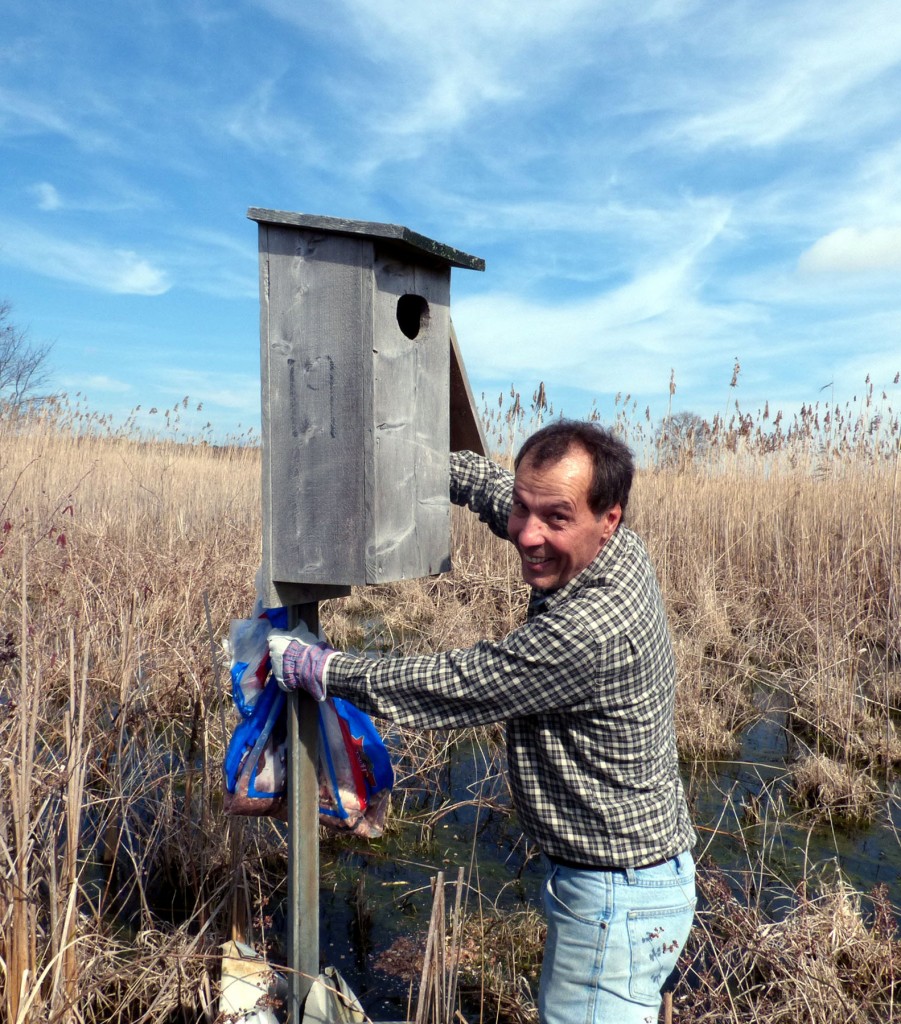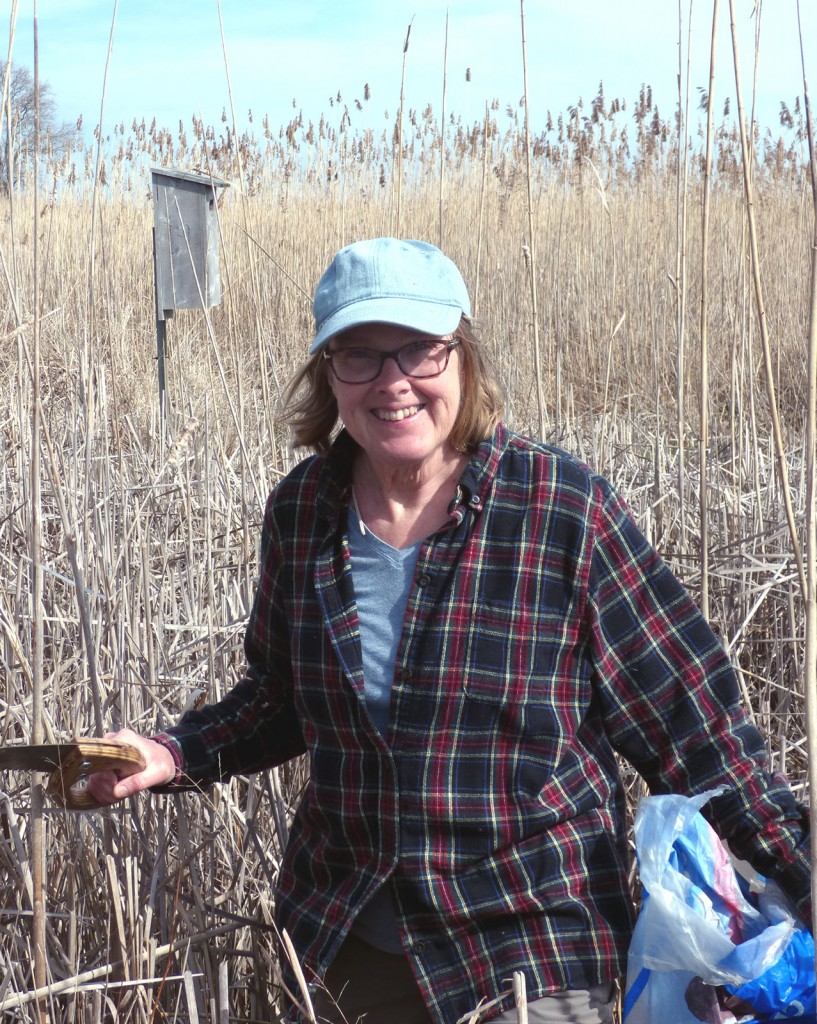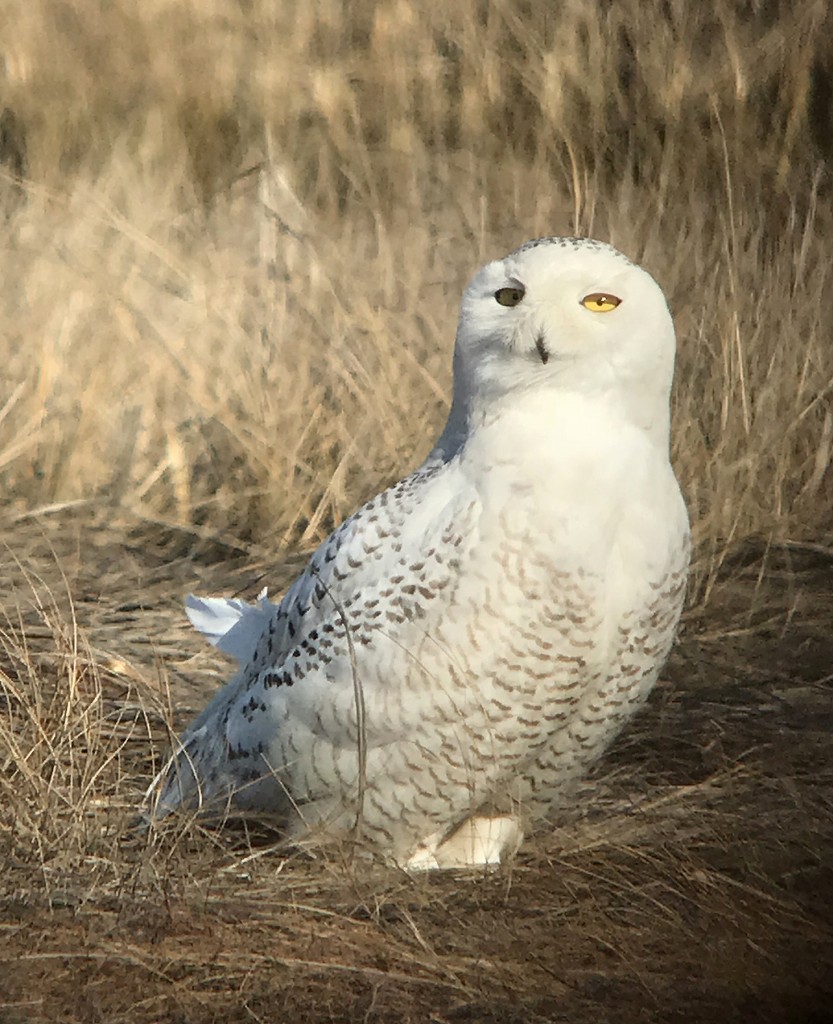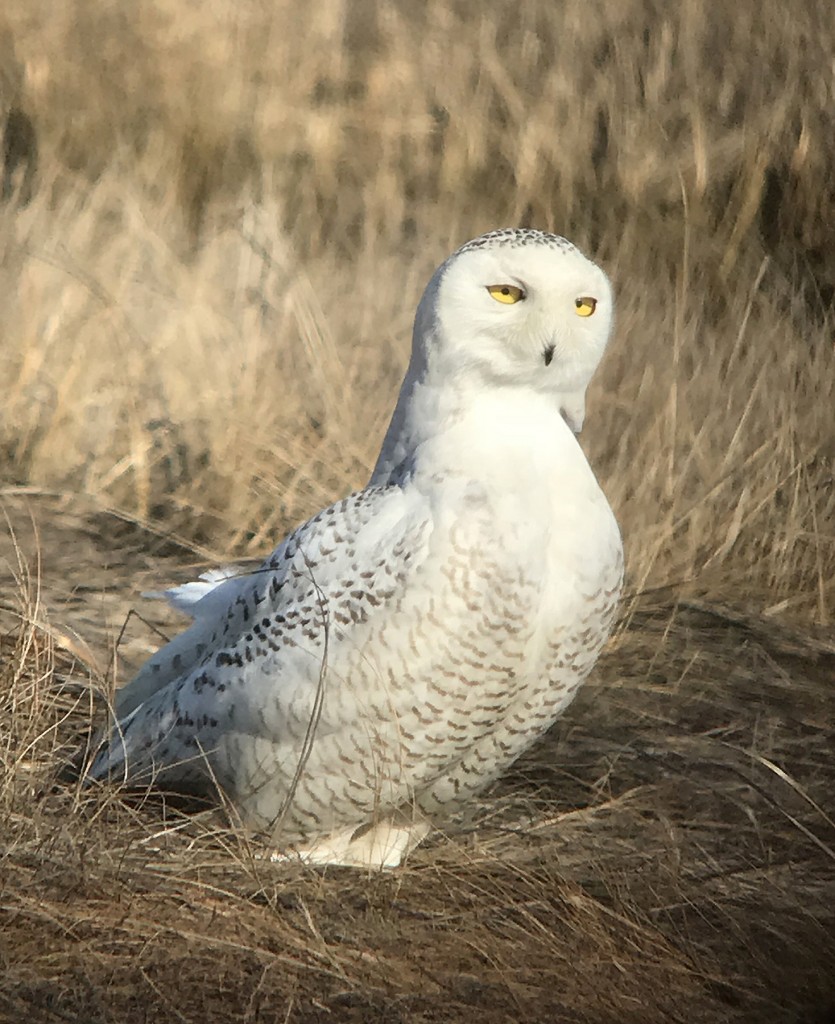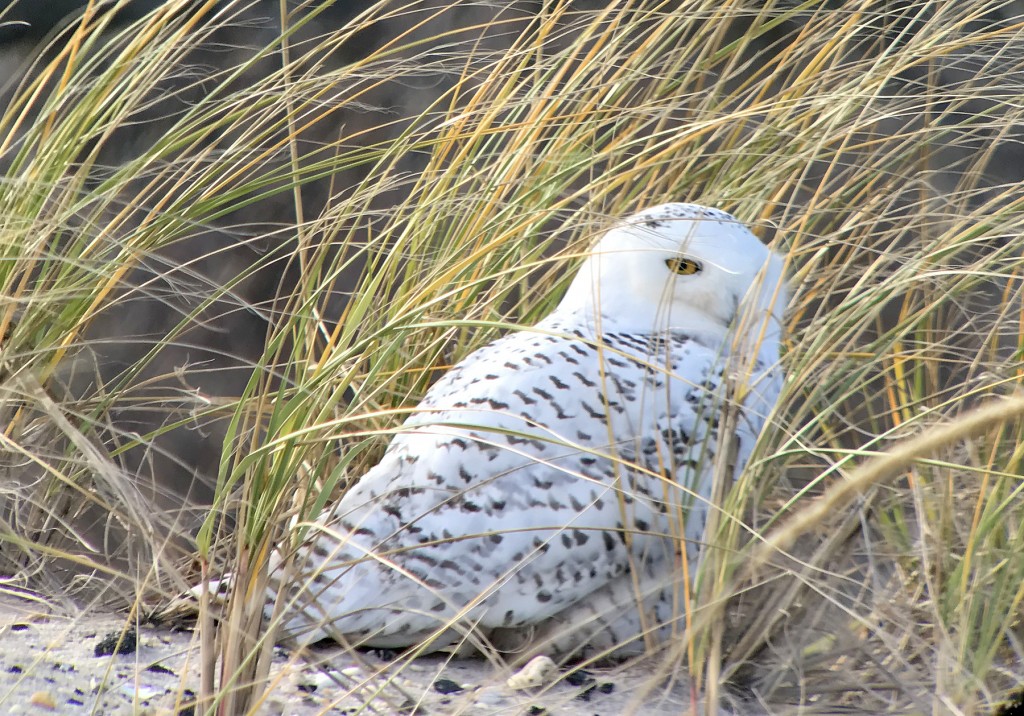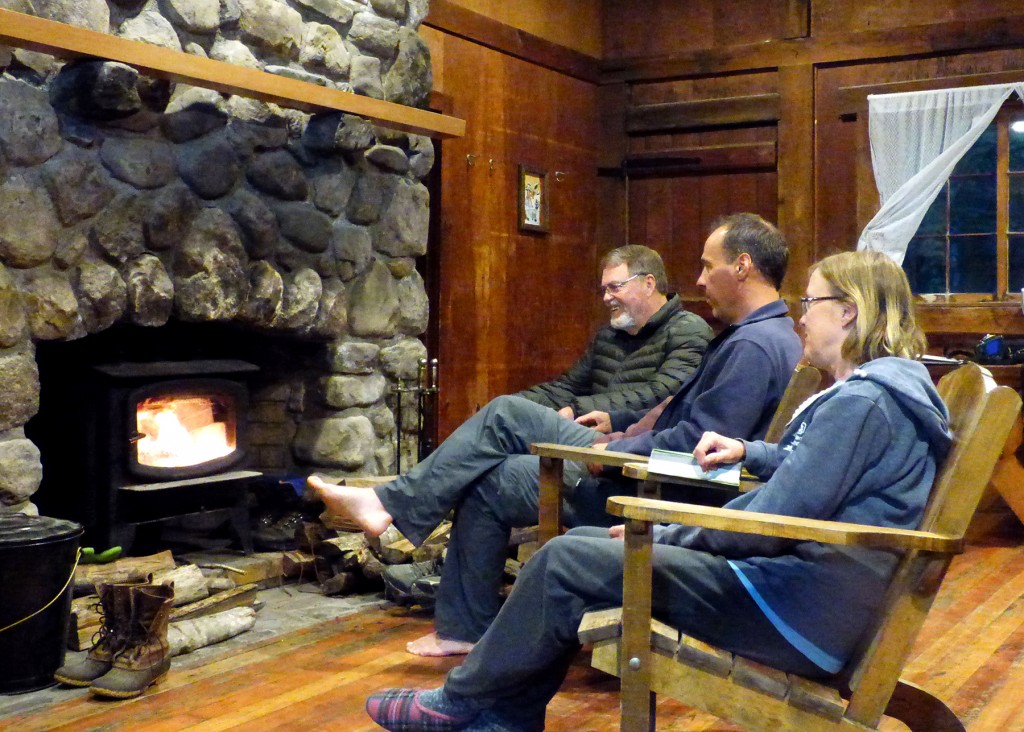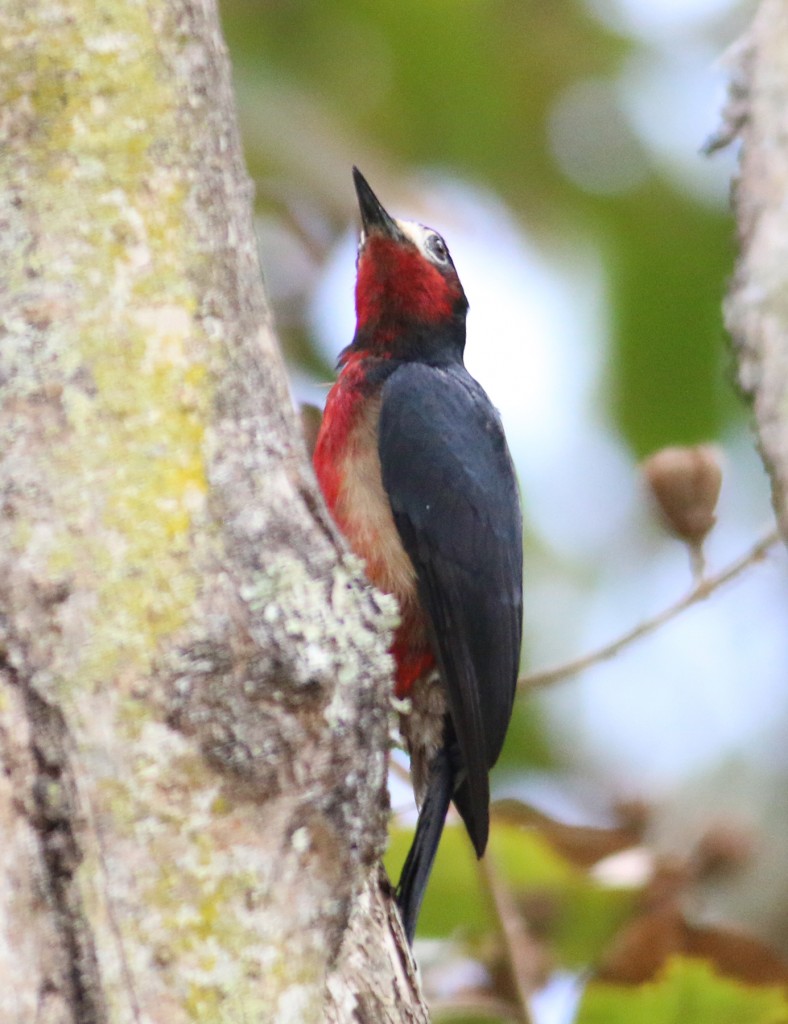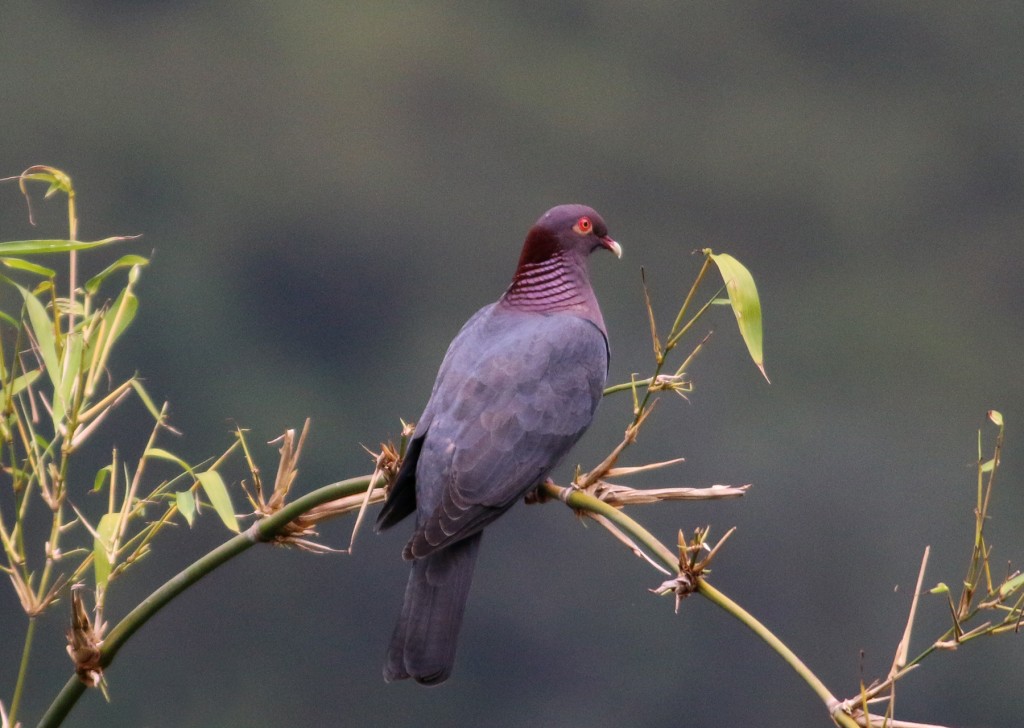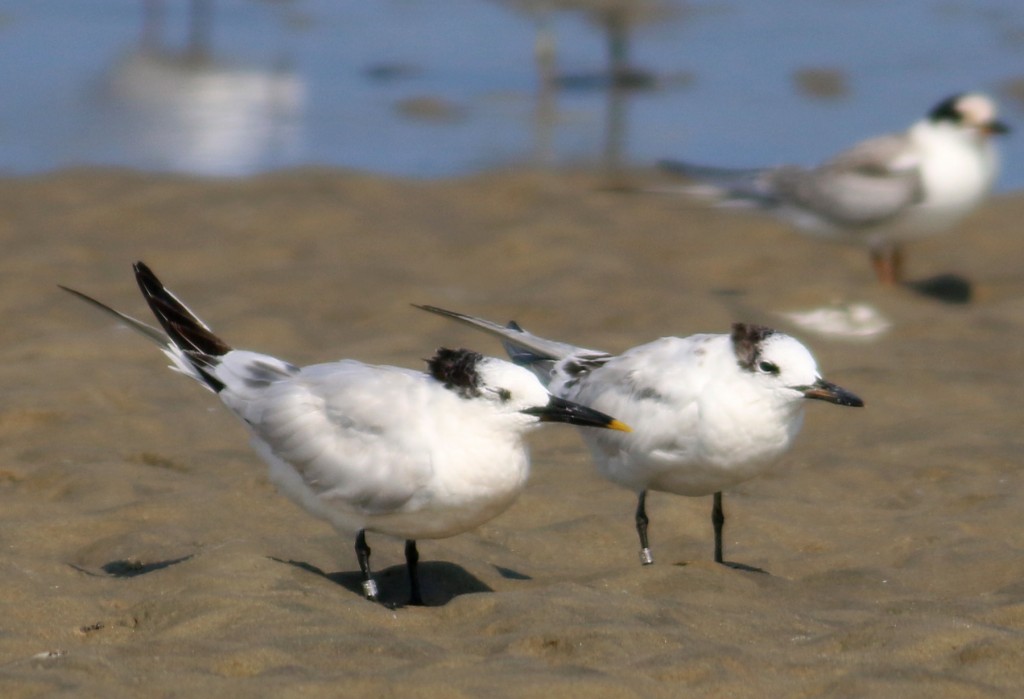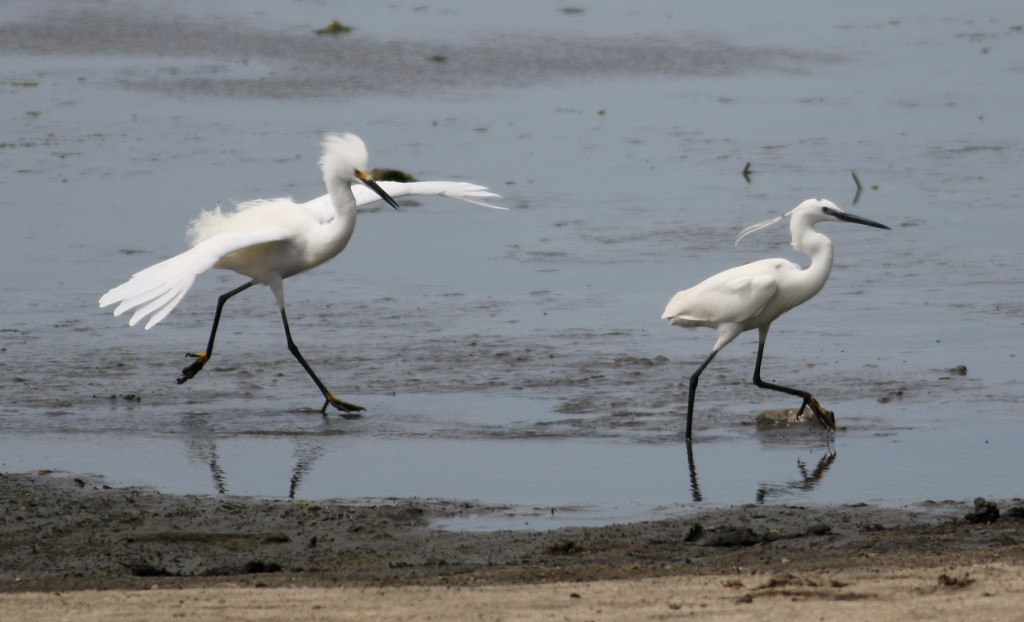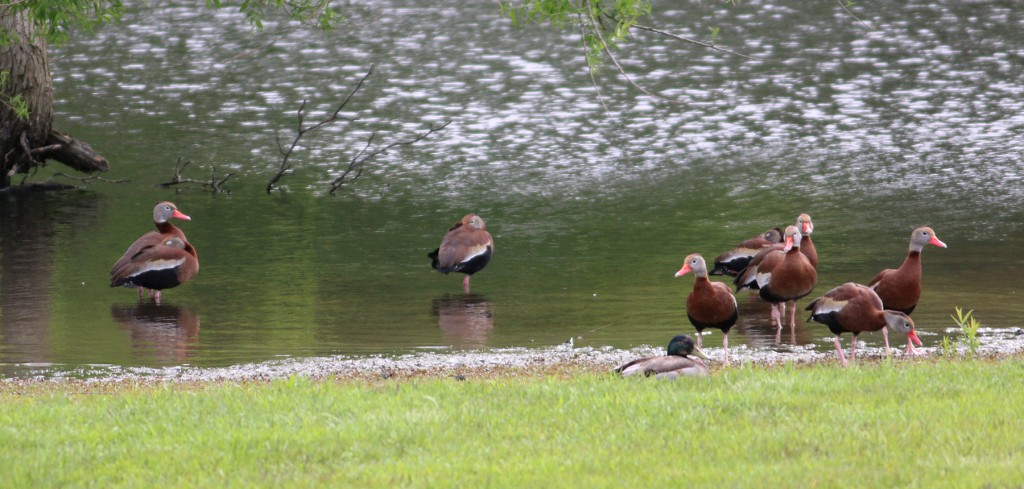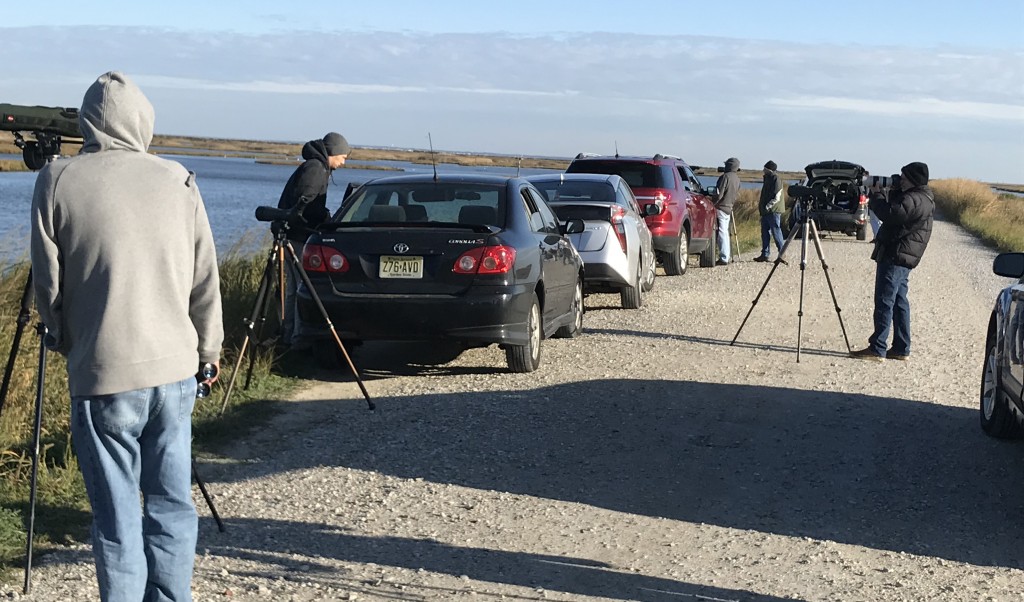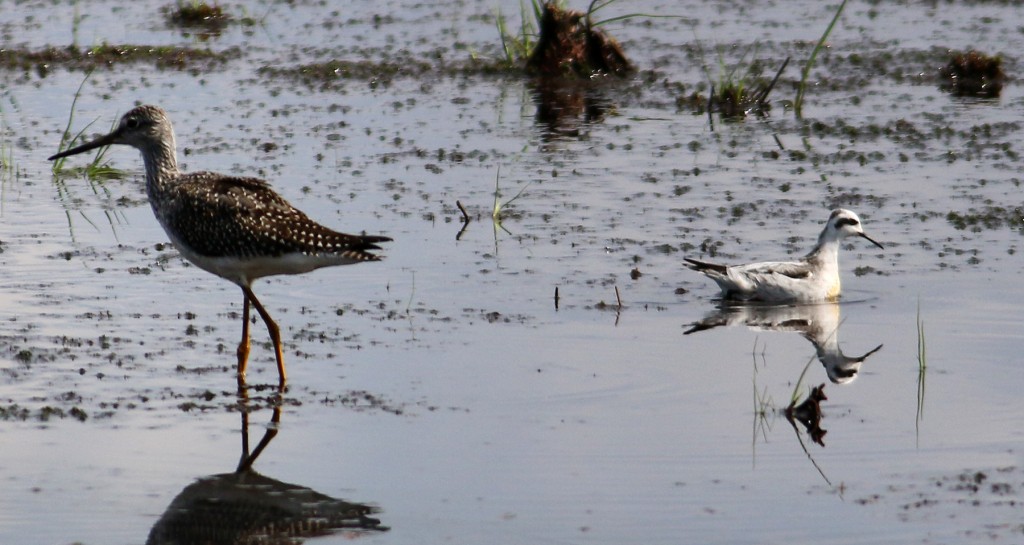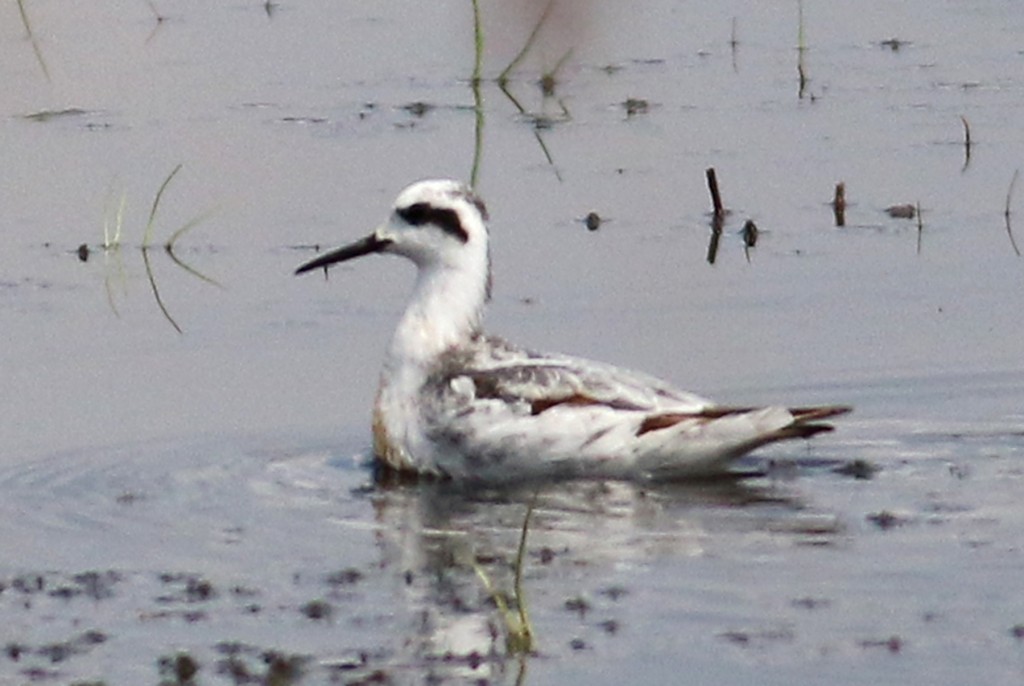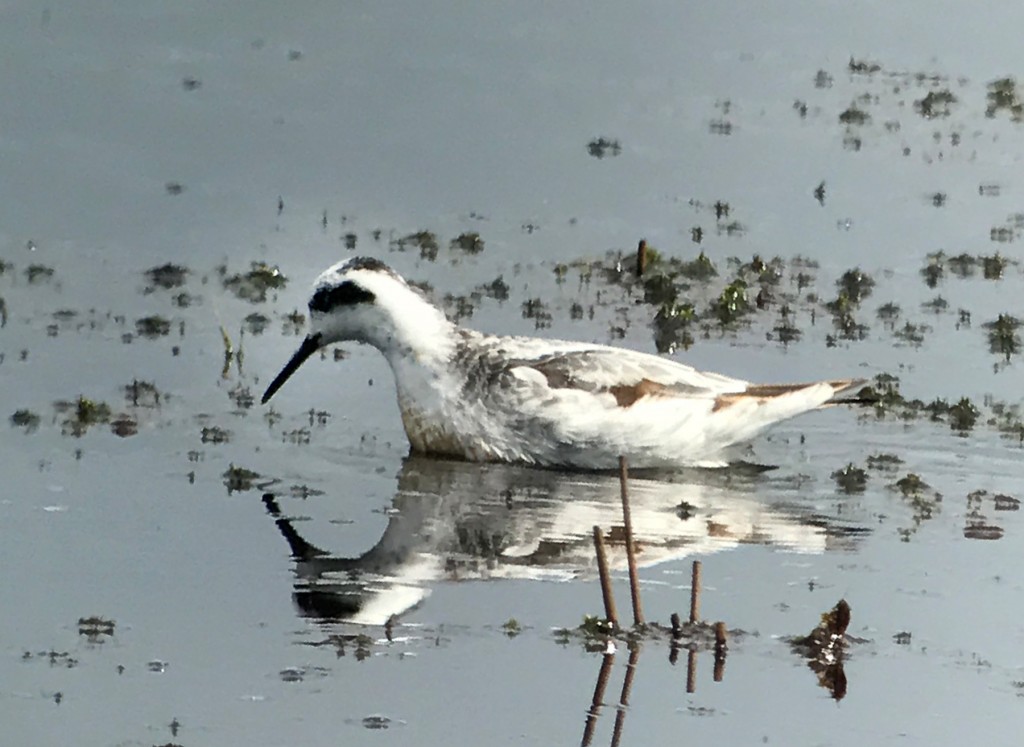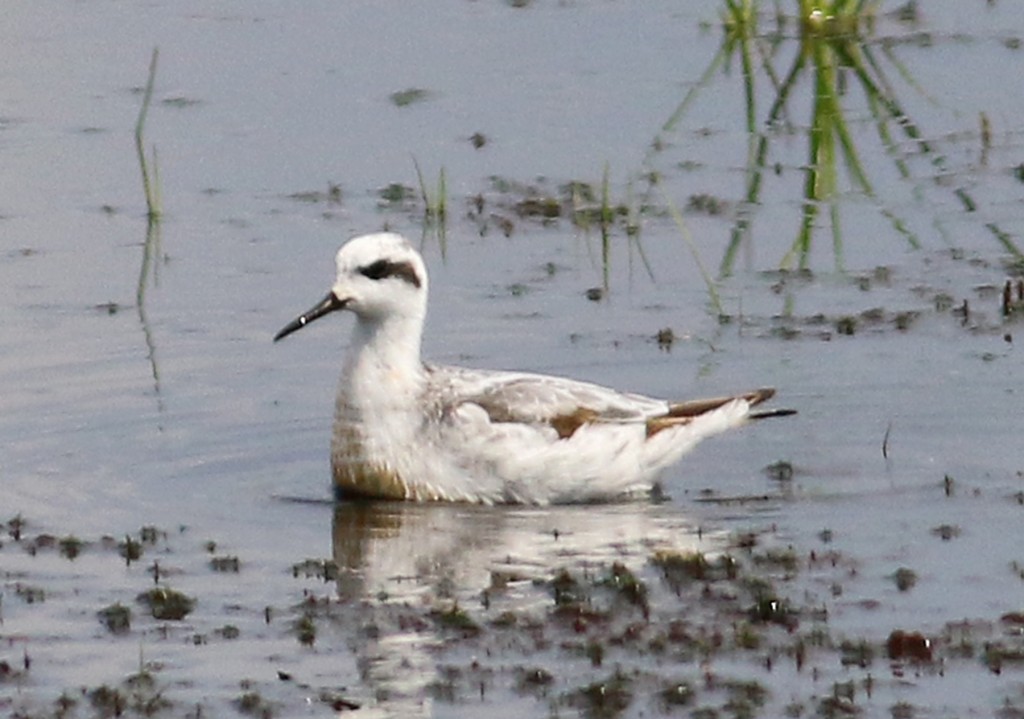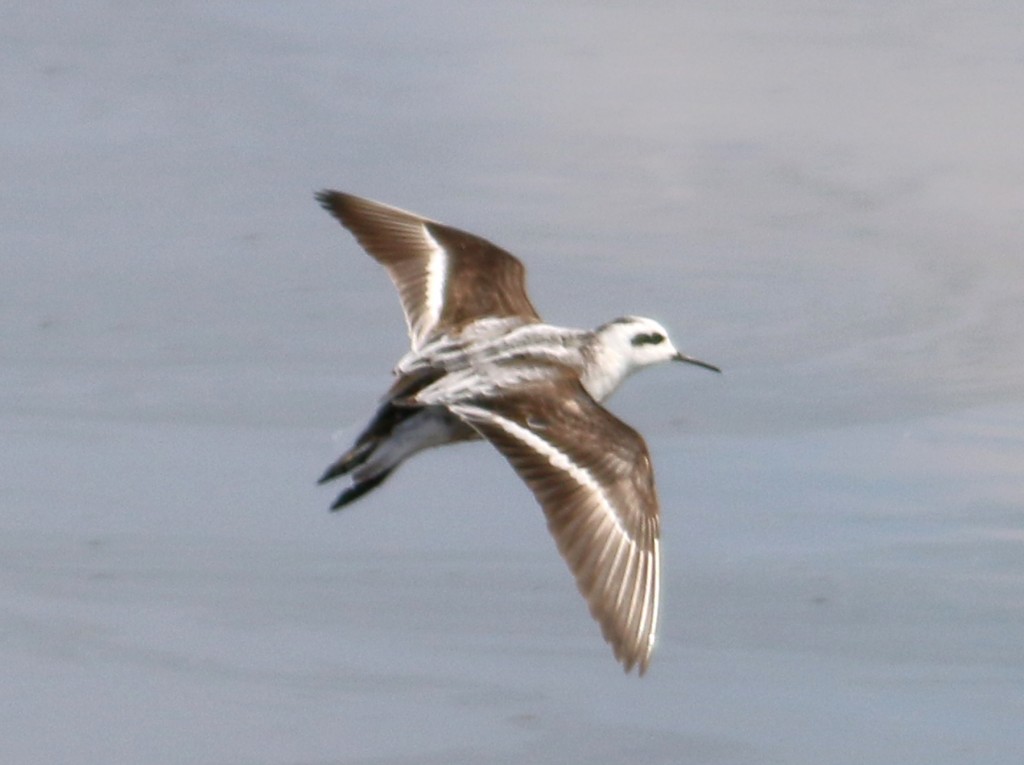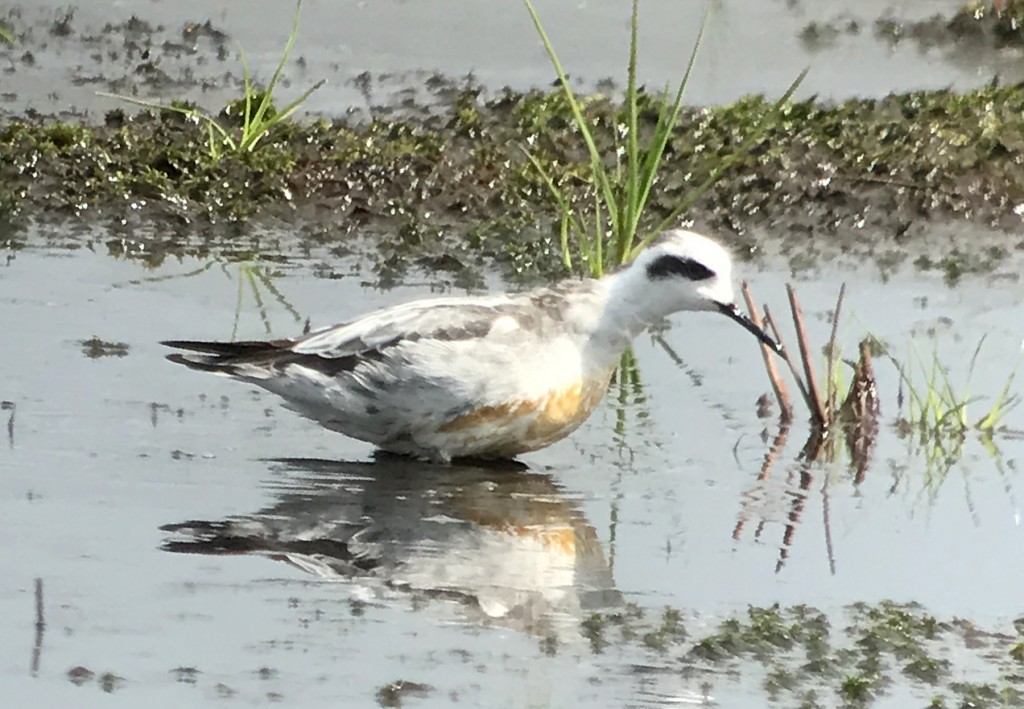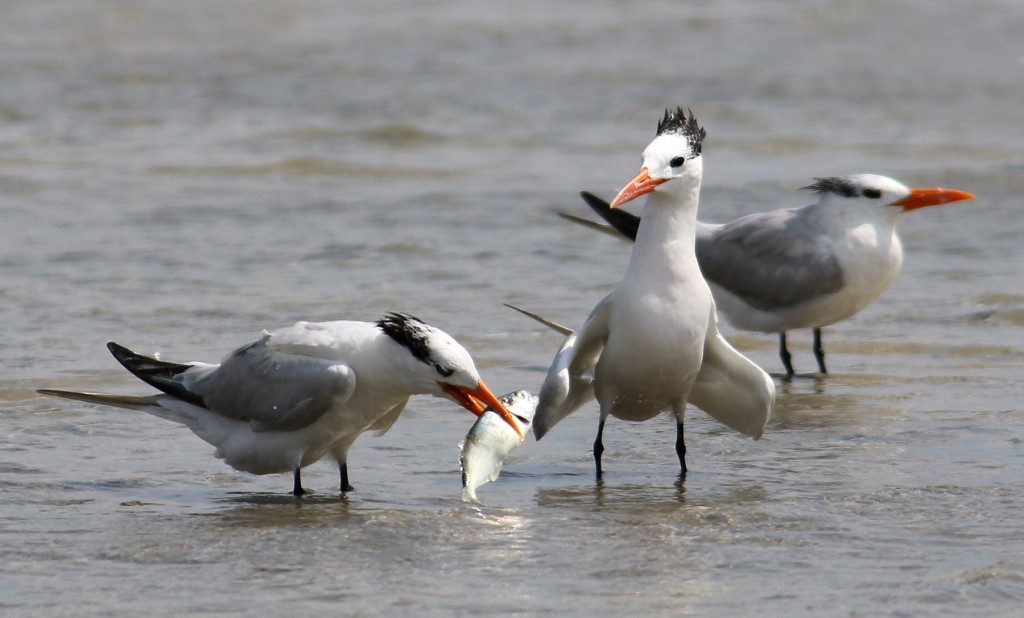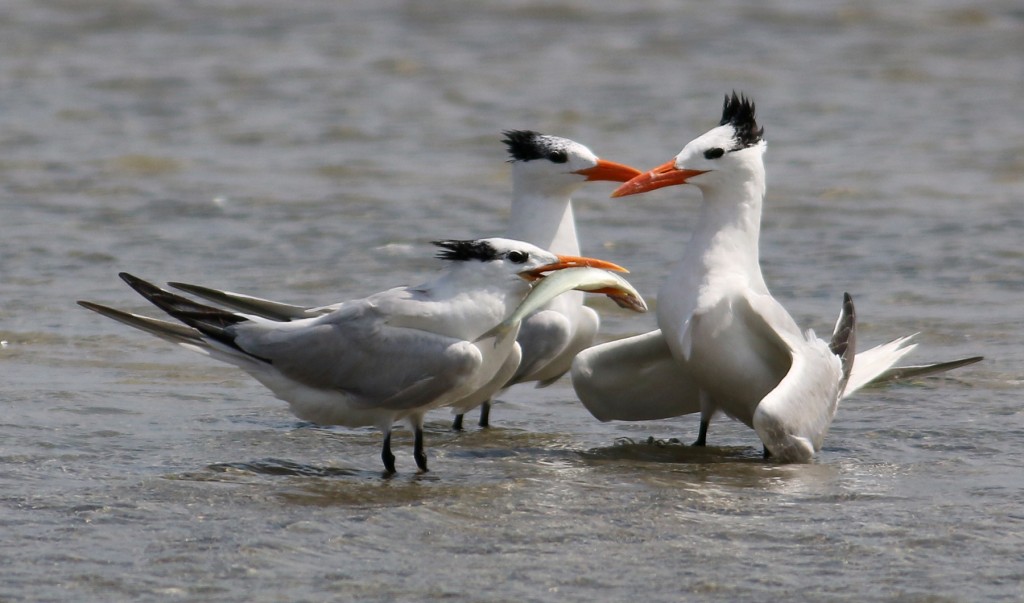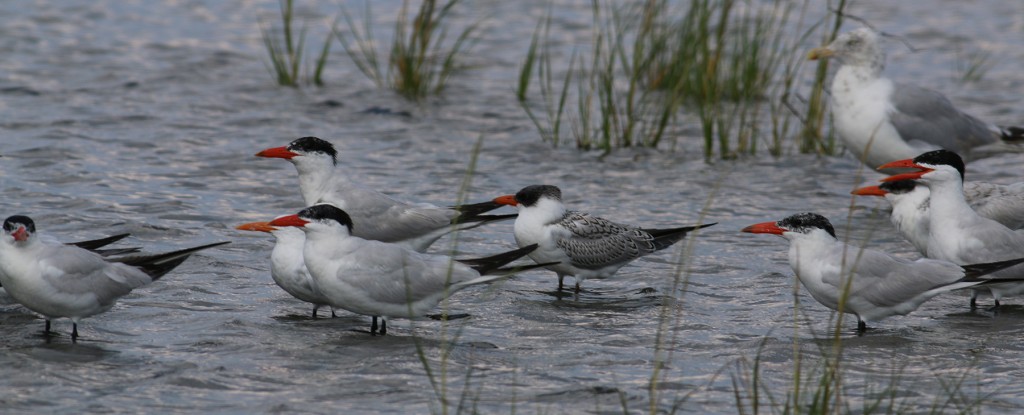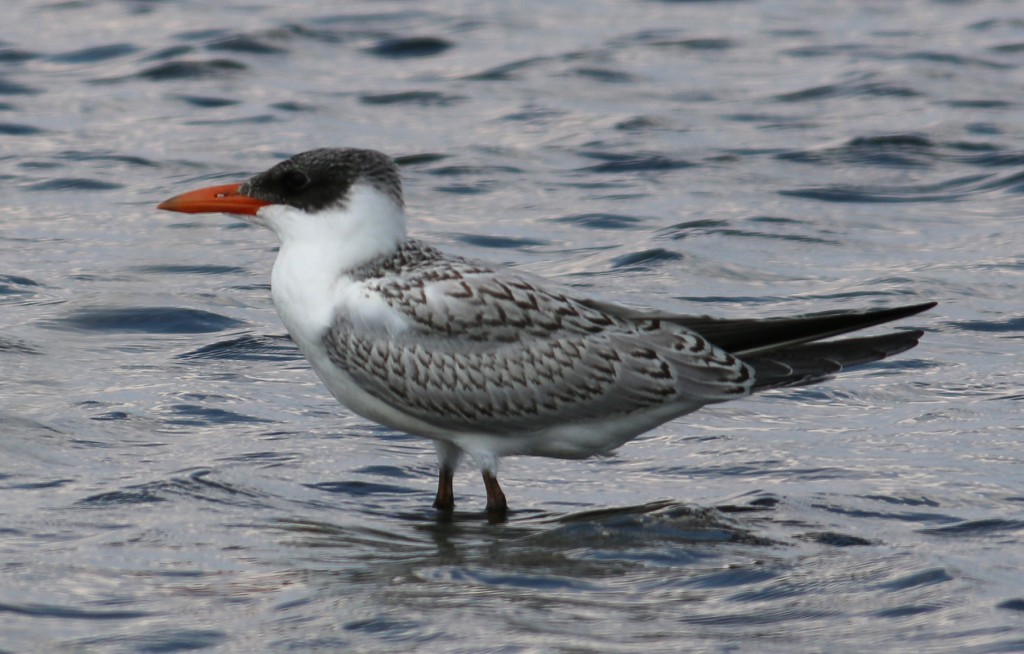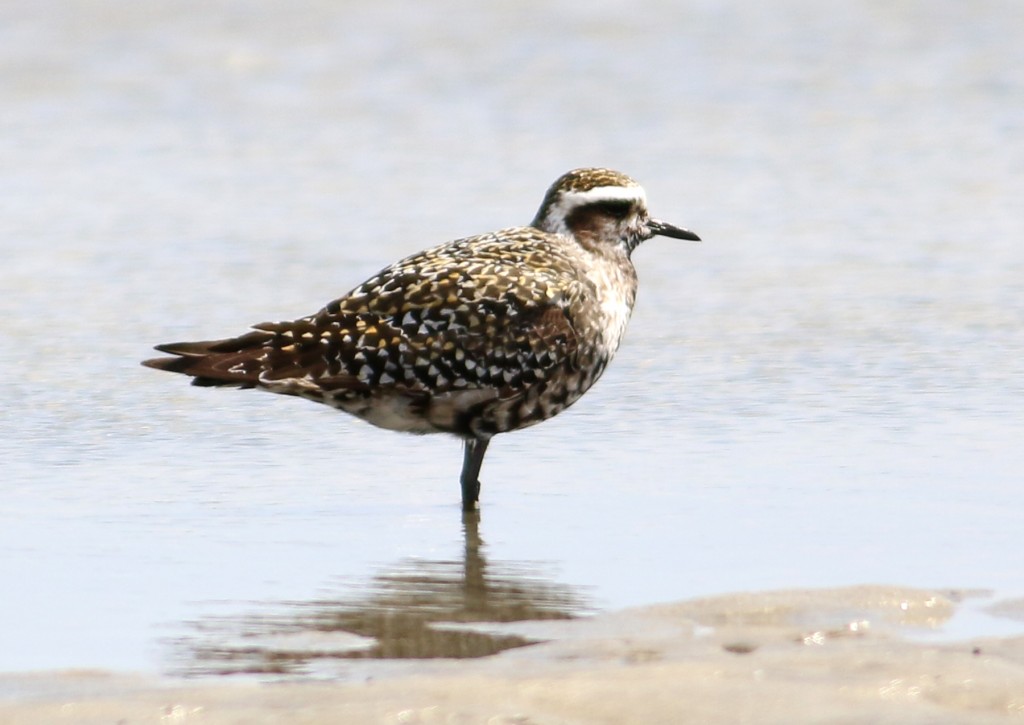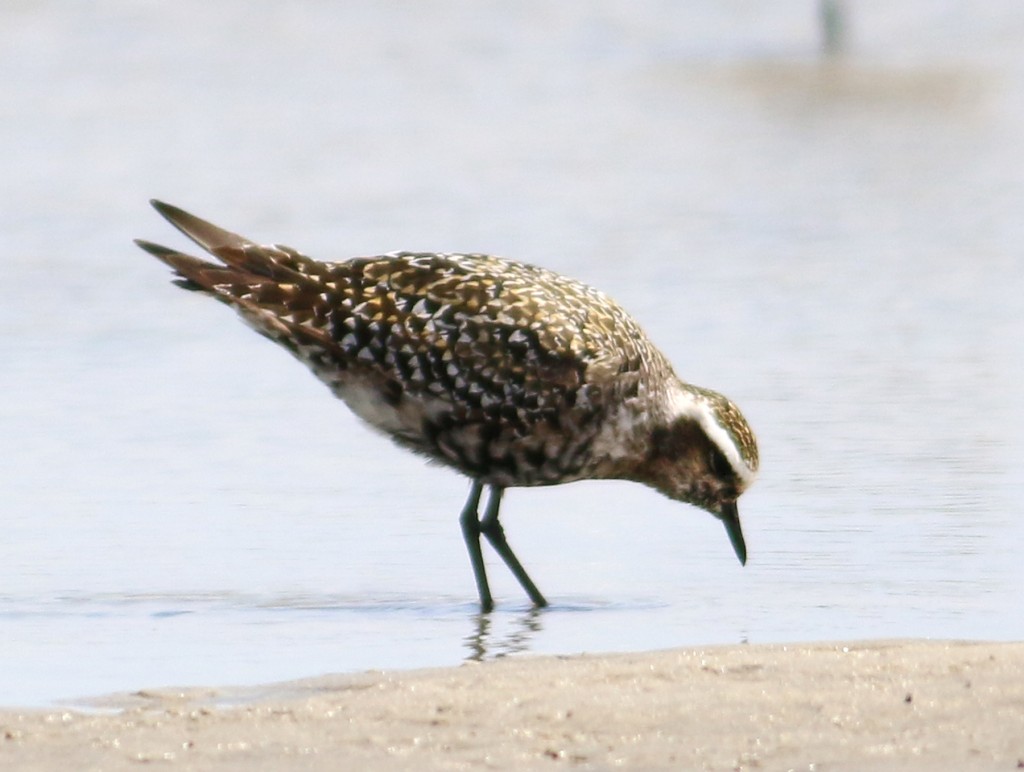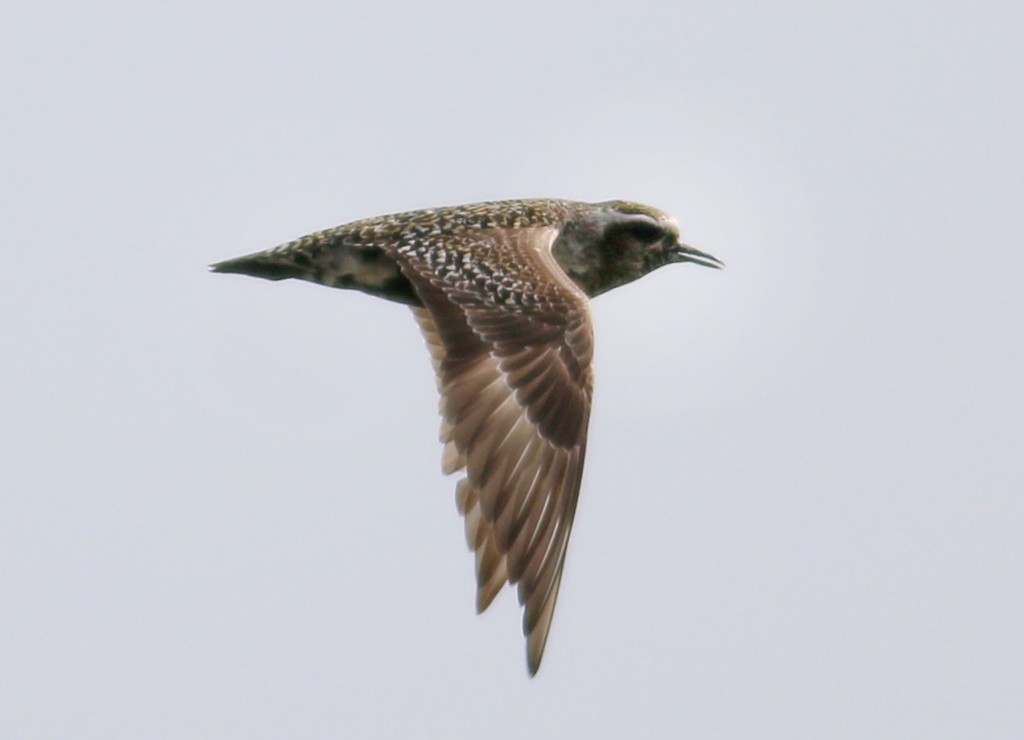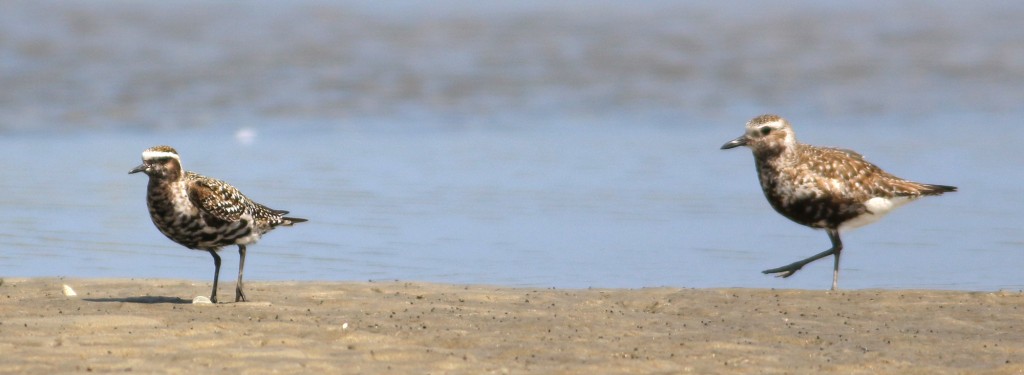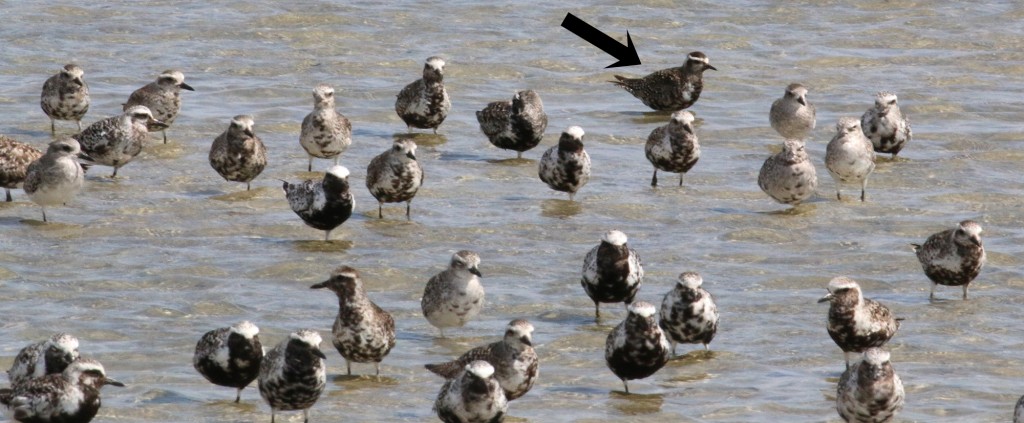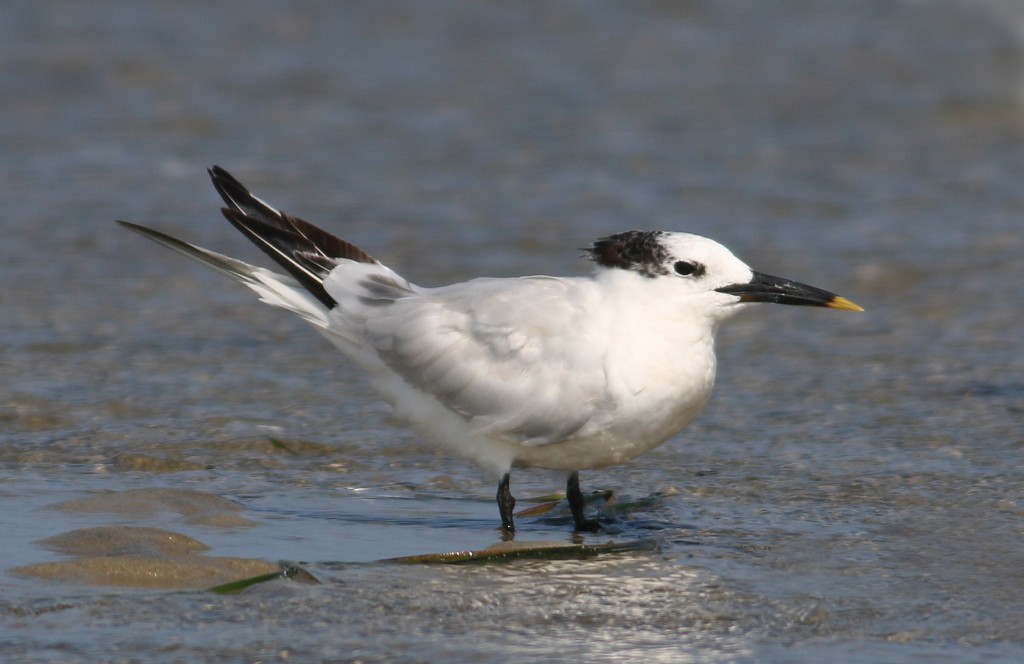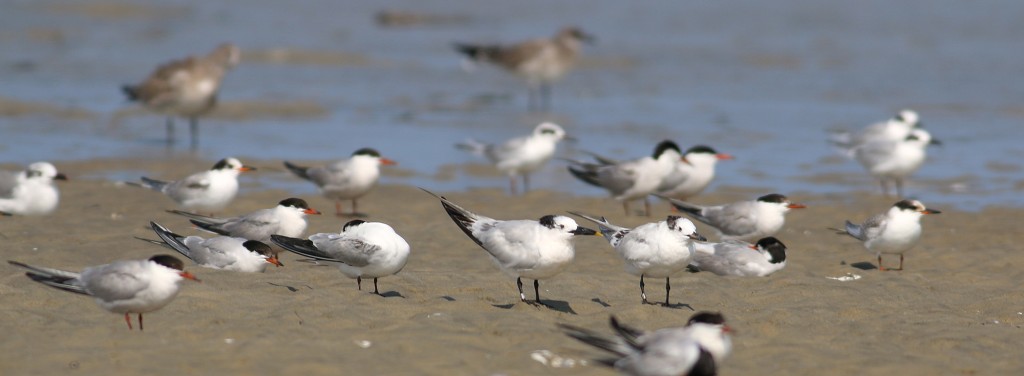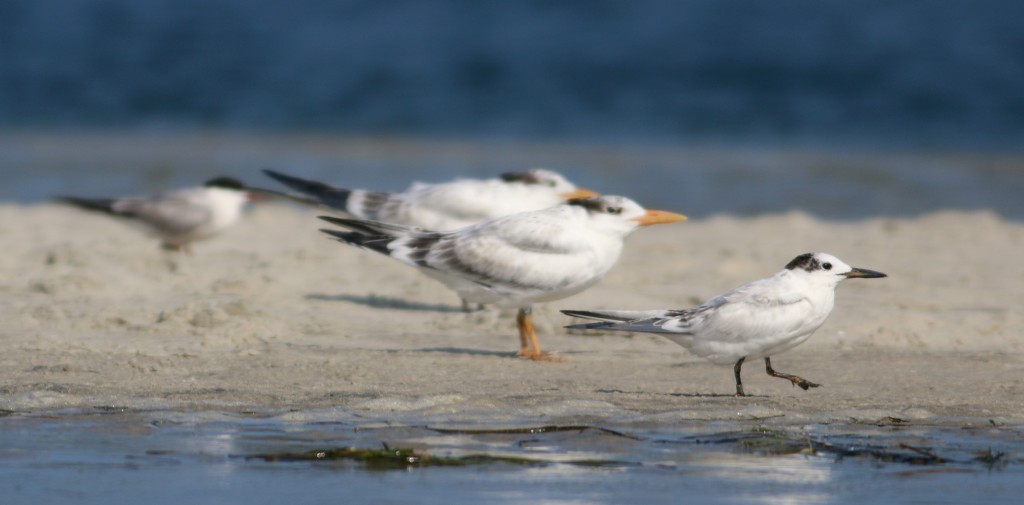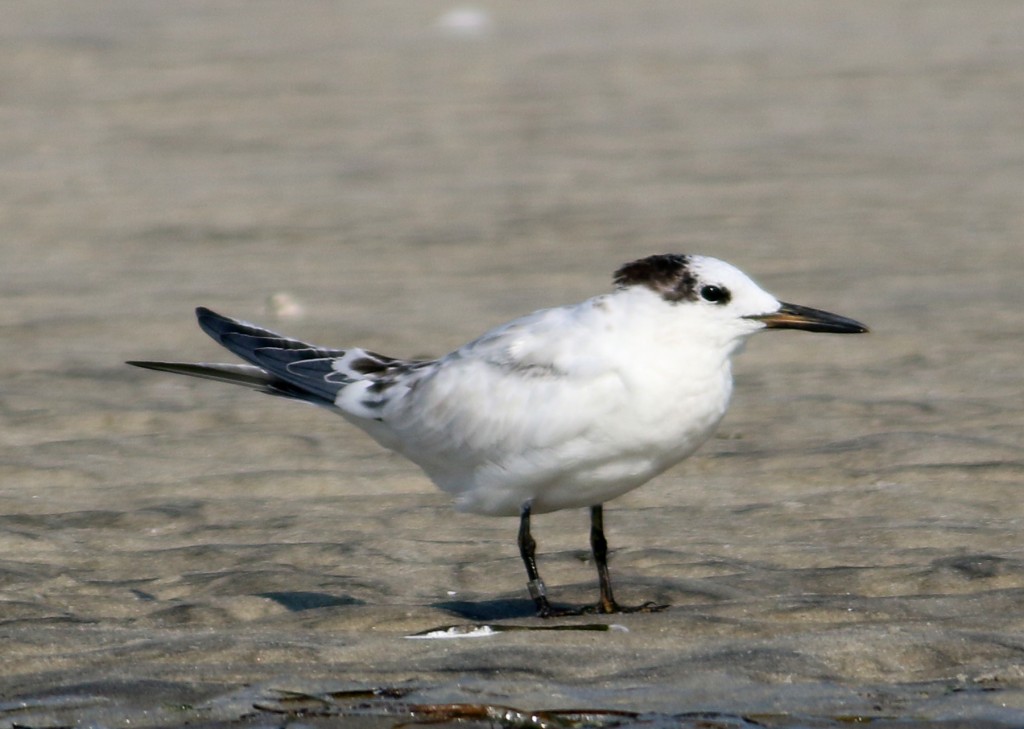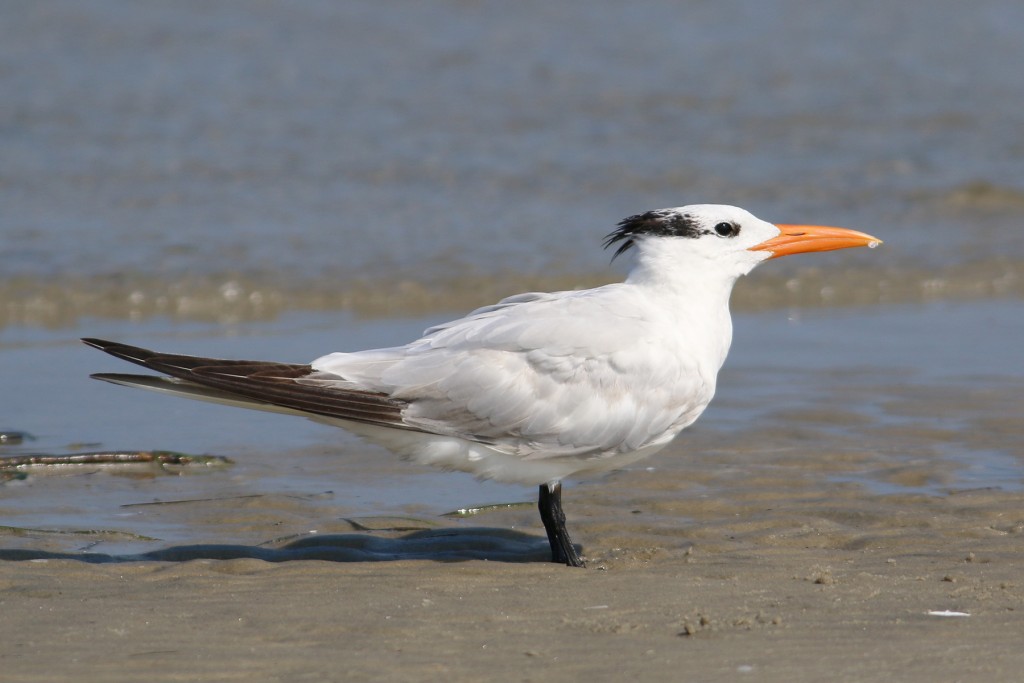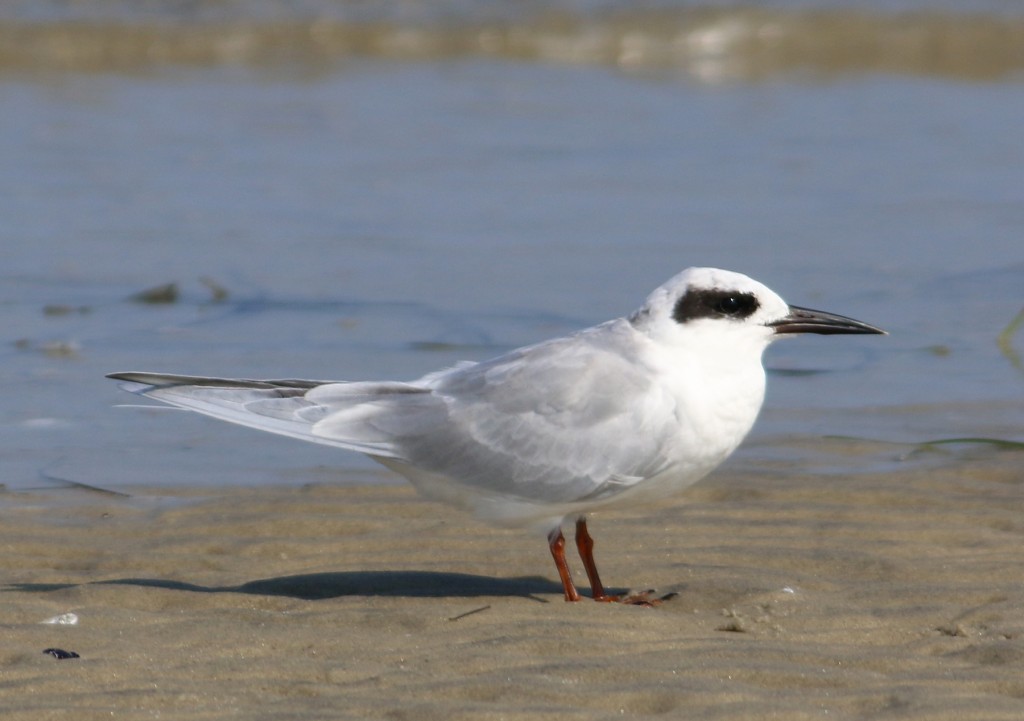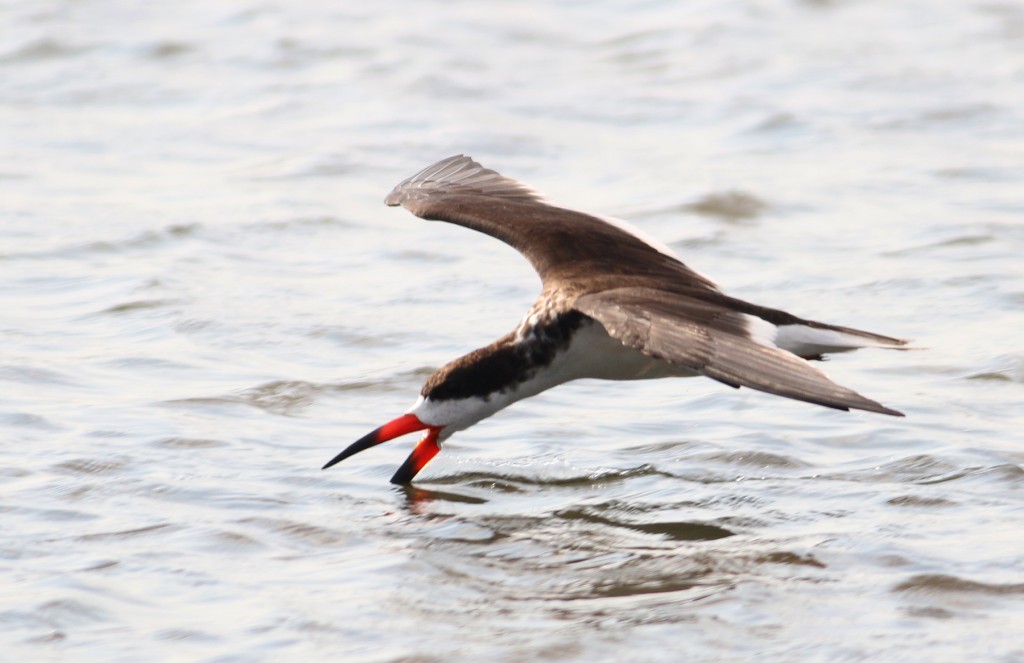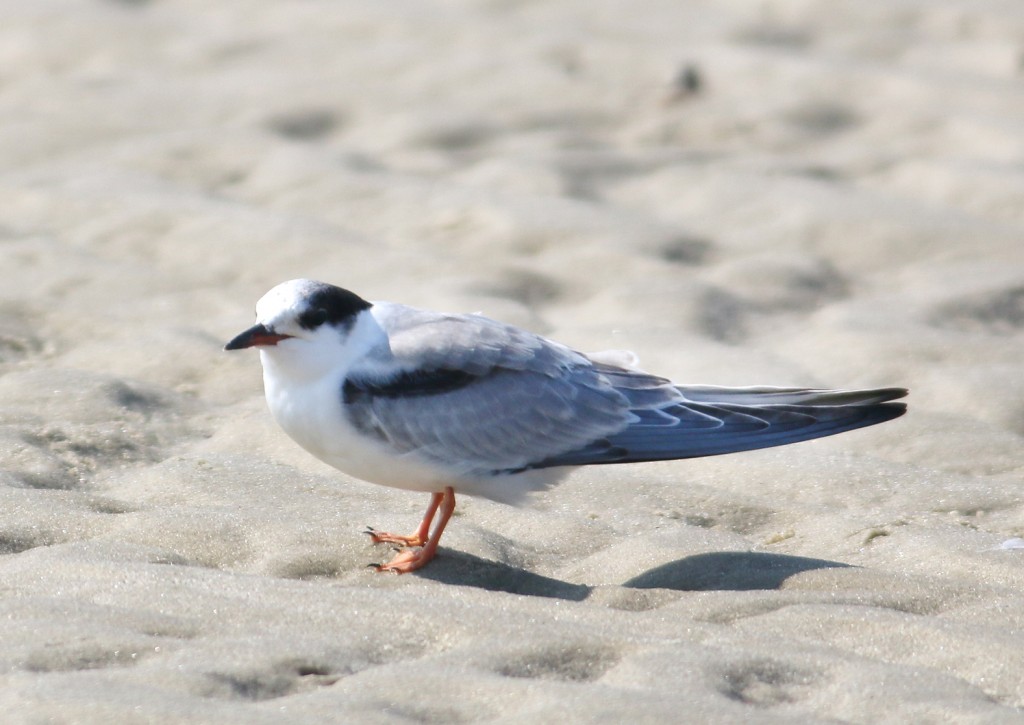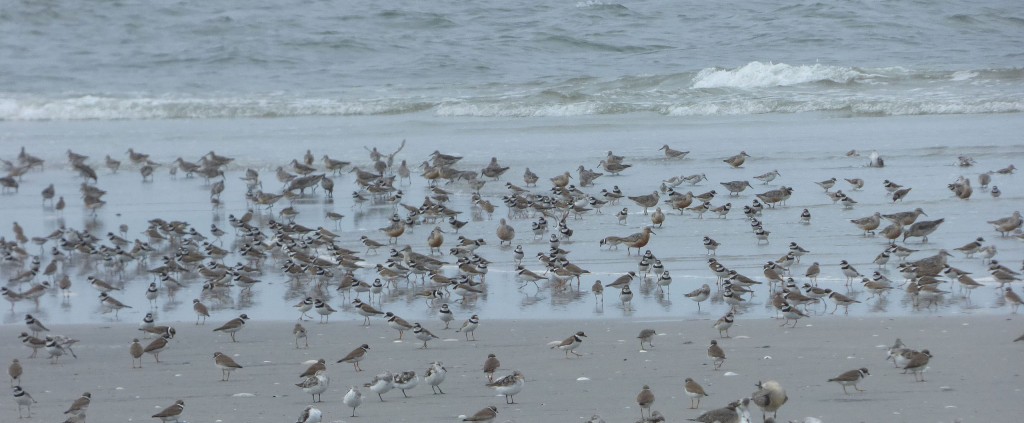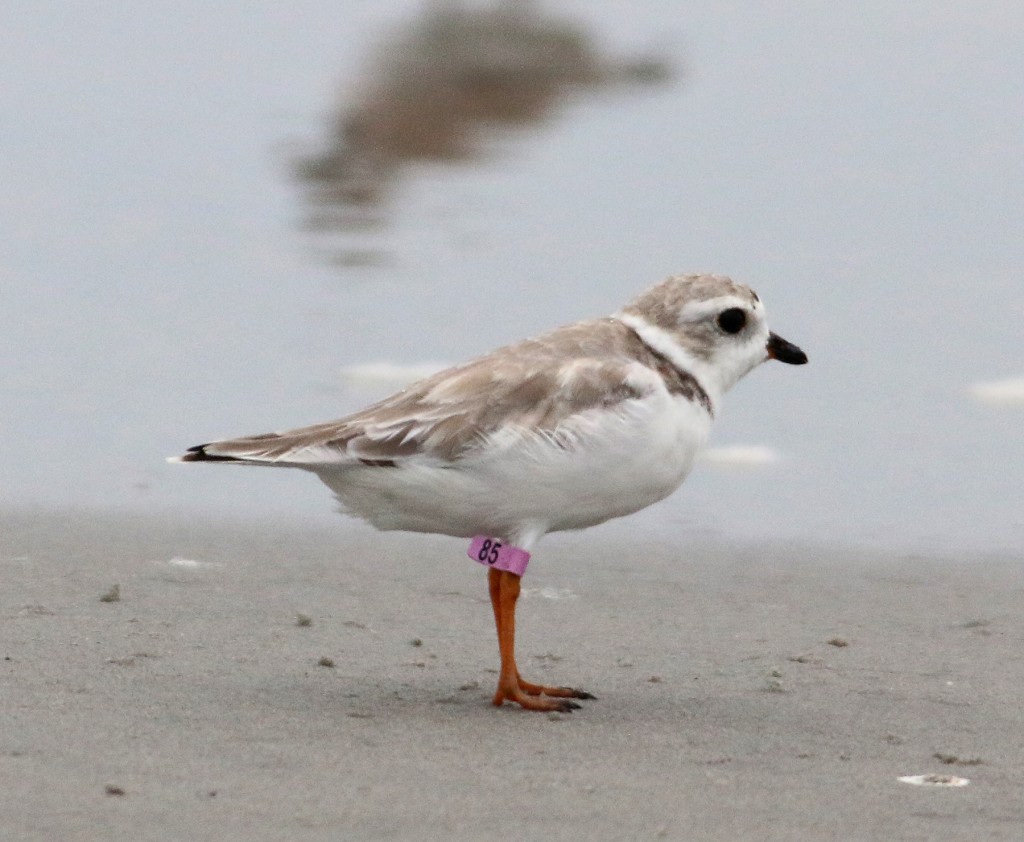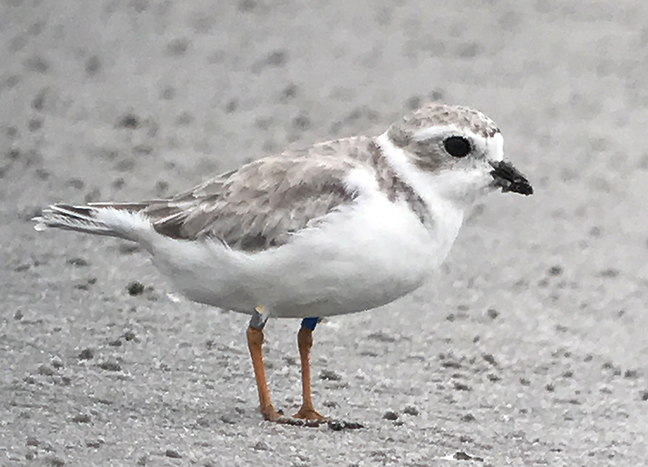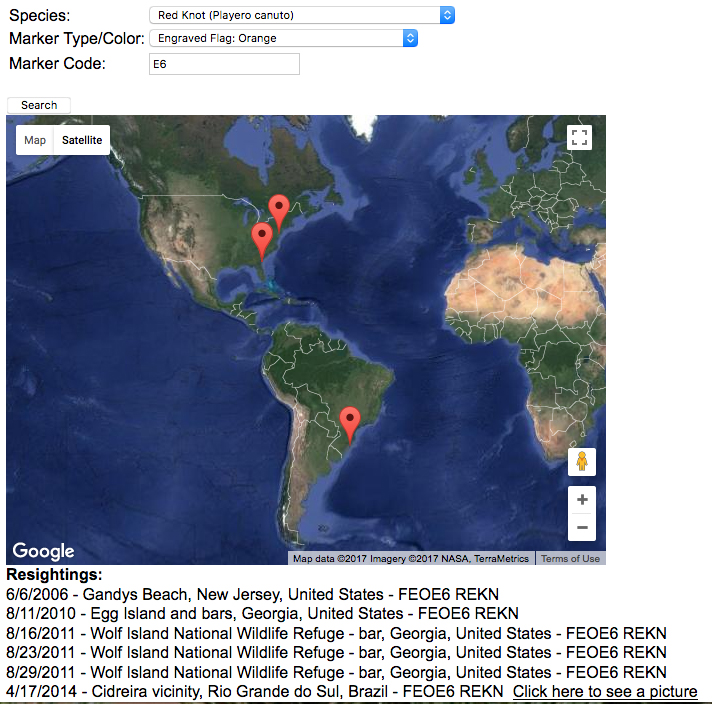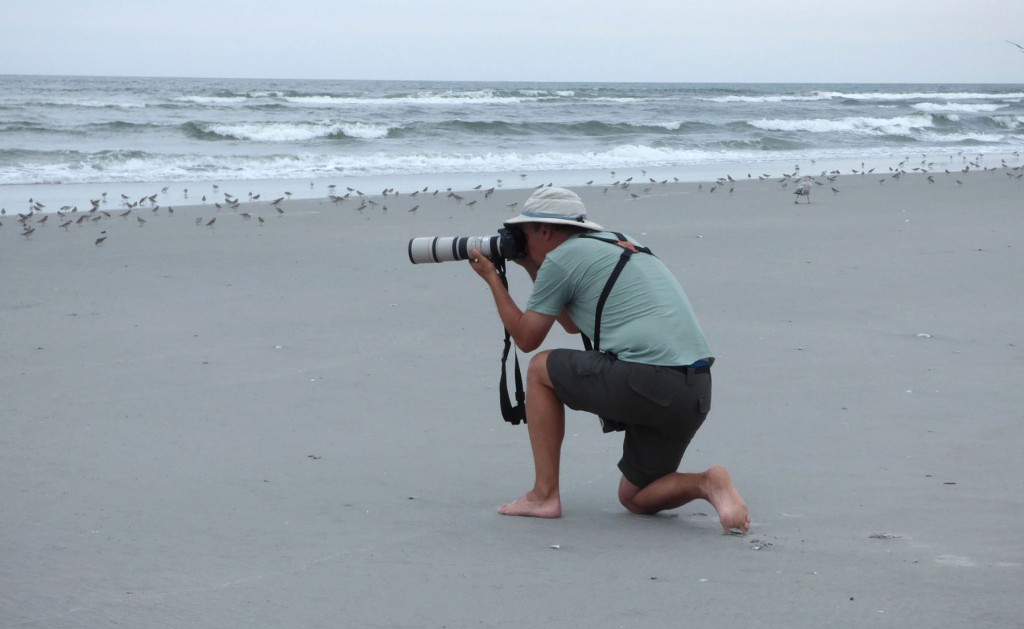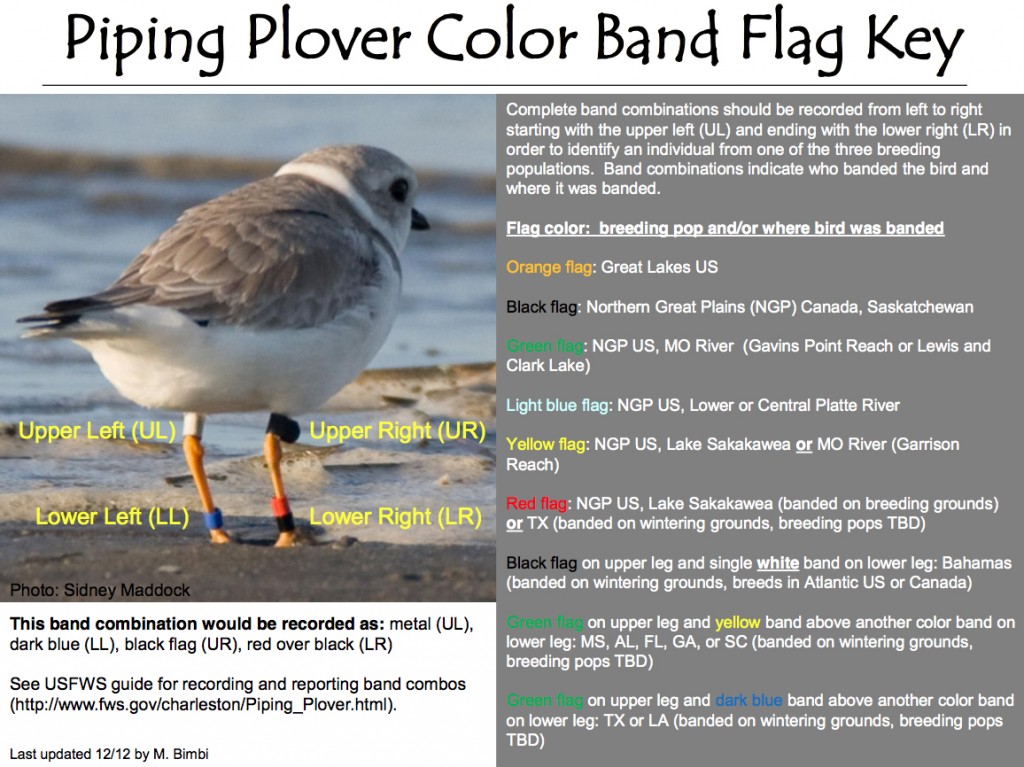Along with most other birders this time of year, I am eagerly anticipating spring migration. Last year (and the prior year too if my memory serves me well) the numbers of migrants that I saw were disappointing, but I don’t know if it was because bird numbers were low all over, or if I was in the wrong locations, or if they were migrating further inland due to wind patterns. Or perhaps southern New Jersey is just not in an optimal geographical location for spring migration. For that reason, I have been watching the sightings of our early season migrants to see if there are any interesting patterns, and I’ll share my initial findings with you here.
By looking at recent eBird sightings, I have noticed at least four different patterns, each of which is shared by two or more species. Before going any further, however, it is probably worth admitting that eBird sightings are an imperfect measure of bird distributions, but it is a pretty good indicator of the likelihood of seeing a particular species, which is what most birders are interested in. So let’s start with the simplest pattern, in which a species appears essentially uniformly across the state. For a species such as Wilson’s Snipe, it essentially doesn’t matter where you are located in NJ; snipe apparently are nearby in suitable habitat early in the season. It’s not clear to me how many of the sightings in the map below are due to migration, as Wilson’s Snipe can overwinter in our area. The number of blue markers (which indicate sightings from this year that are more than a month old) is indicative of this hardy species. At the level that I am able to access the data, it is likely that other half-hardy species in which part of the population remains in NJ over the winter would show a similar pattern.
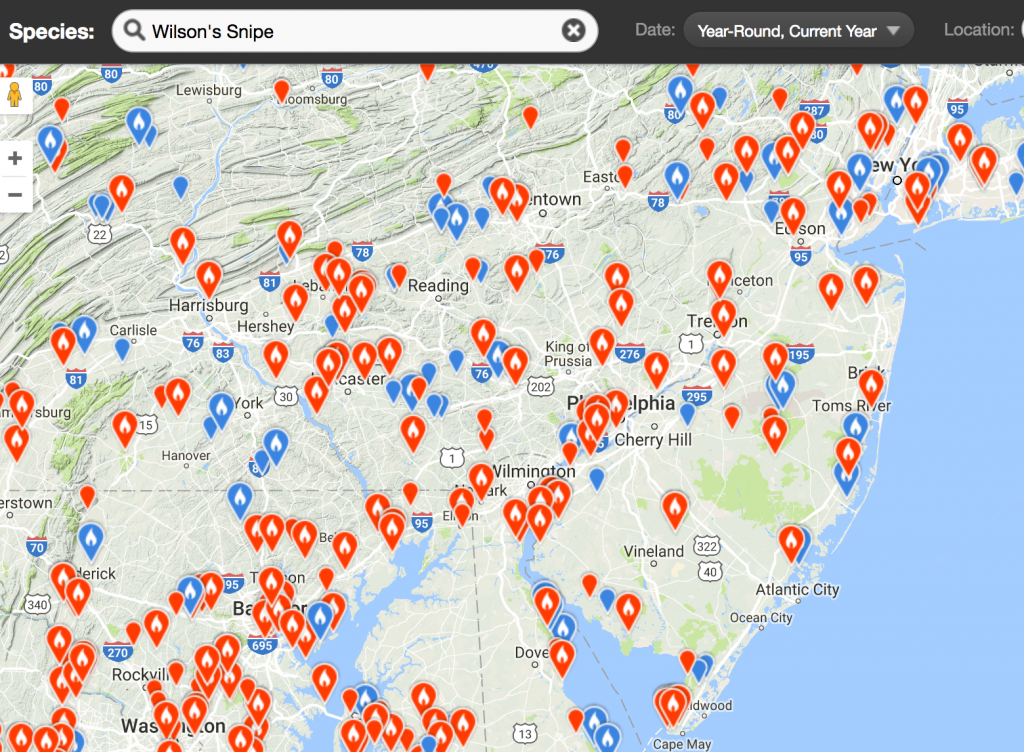
Here is the eBird sightings map for Wilson’s Snipe from April 2, with the sightings distributed relatively evenly throughout the area shown here, even beyond New Jersey.
Other species, however, exhibit a different pattern, where the northward migration is obvious, and where they appear to migrate principally along the western edge of NJ, thereby bypassing the Jersey coast (and possibly the DelMarVa peninsula too). Look at the sightings for Palm Warbler and Northern Rough-winged Swallow from early April.

This is the eBird sighting map for Northern Rough-winged Swallow from April 7. Notice the similar pattern as Palm Warbler, with a relative paucity of sightings across the DelMarVa peninsula and southern NJ.
Notice how the sightings are more numerous along the western shore of Chesapeake Bay, continuing up the Delaware River valley and across northern NJ, bypassing much of the DelMarVa peninsula and southern NJ. This is an interesting class for me, especially if it is shared by many other species. We need to realize that these sightings are just the forefront of the migrants for these species, and because they are fairly abundant birds, as the season progresses we will have little problem seeing these species even along the Jersey coast. But to me this indicates that a local migration corridor might exist and if this pattern holds for less abundant species, then western NJ would provide the best opportunity to view them. So what drives this kind of pattern? I don’t know yet. It could be that these are species that prefer not to migrate over water, so they are trying to avoid crossing the Chesapeake and Delaware Bays. Perhaps their ultimate breeding grounds are further inland, so they are avoiding the eastern coast. Perhaps the coastal region is lacking food sources or habitat that favor their survival during migration. I really don’t know, but I will be interested in seeing how many other species migrate this way. As you can see below, this pattern seems to be shared with House Wren too.
A third pattern is exhibited by Common Yellowthroat and Black-and-white Warbler. In contrast with the previous three species, Common Yellowthroat and Black-and-white Warbler seem to favor the coast, being sighting readily in DelMarVa and southern NJ, with a line of migration moving steadily and evenly northward. Does this pattern occur because there is plenty of breeding habitat for these species in southern NJ and in the pinelands, or can there be other reasons? Are they more comfortable migrating over larger bodies of water? Knowing how many other species exhibit this pattern might help to figure it out.
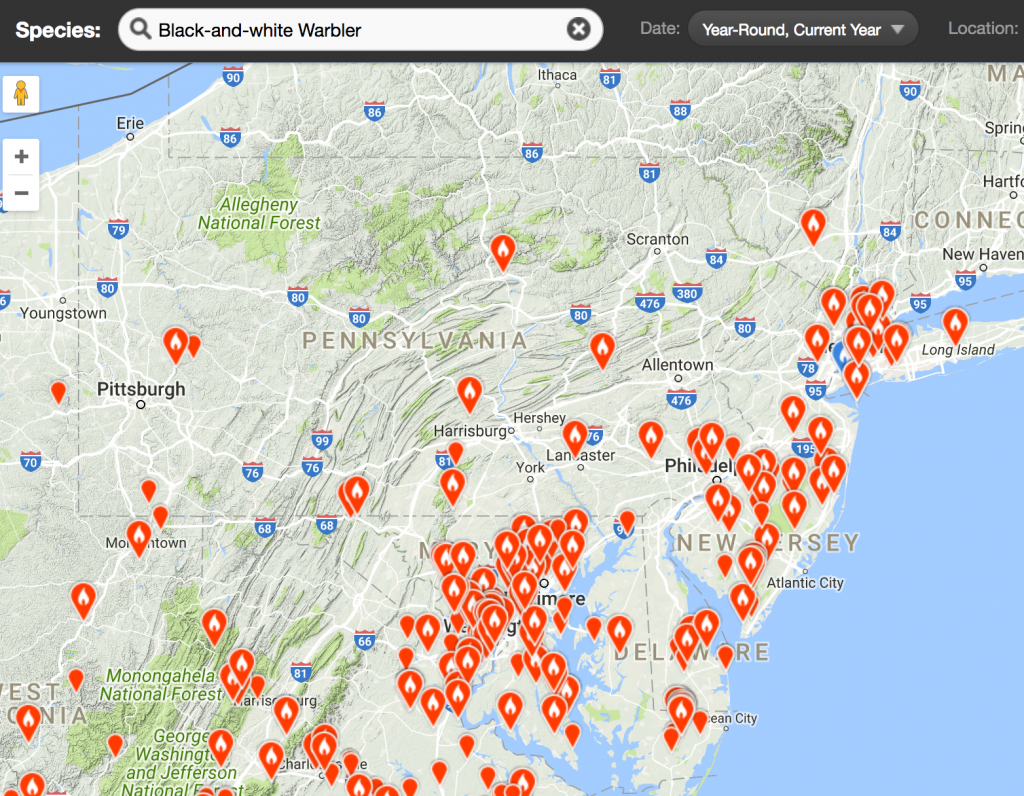
Sightings of Black-and-white Warbler from April 18. As with Common Yellowthroat and in contrast with the earlier species, they appear across southern NJ first, lacking that migratory line going across western NJ.

Blue-gray Gnatcatcher displays a similar pattern at the previous two species, with a fairly even distribution across southern NJ and DelMarVa, lacking any obvious concentration across western NJ.
One final pattern has emerged from looking at recent sightings of Summer Tanager and Blue Grosbeak. Let’s start first with Blue Grosbeak. If we look at the early sightings (as of April 18), we see a relatively even distribution northward across the eastern US, but then there is an obvious spurt of sightings up the easternmost coast, from Virginia up through Delaware, NJ, and into Long Island. Could it perhaps have been due to some weather anomaly? If so, I’d expect that coastal extension to disappear or to even out over the next week or so. That doesn’t happen. Instead, a week later, the relatively even distribution occurring across the eastern US remains, as does that coastal extension, which extends further upward now, through Connecticut and up to Massachusetts. Eight days later on May 2 the coastal sightings extend up into Canada.
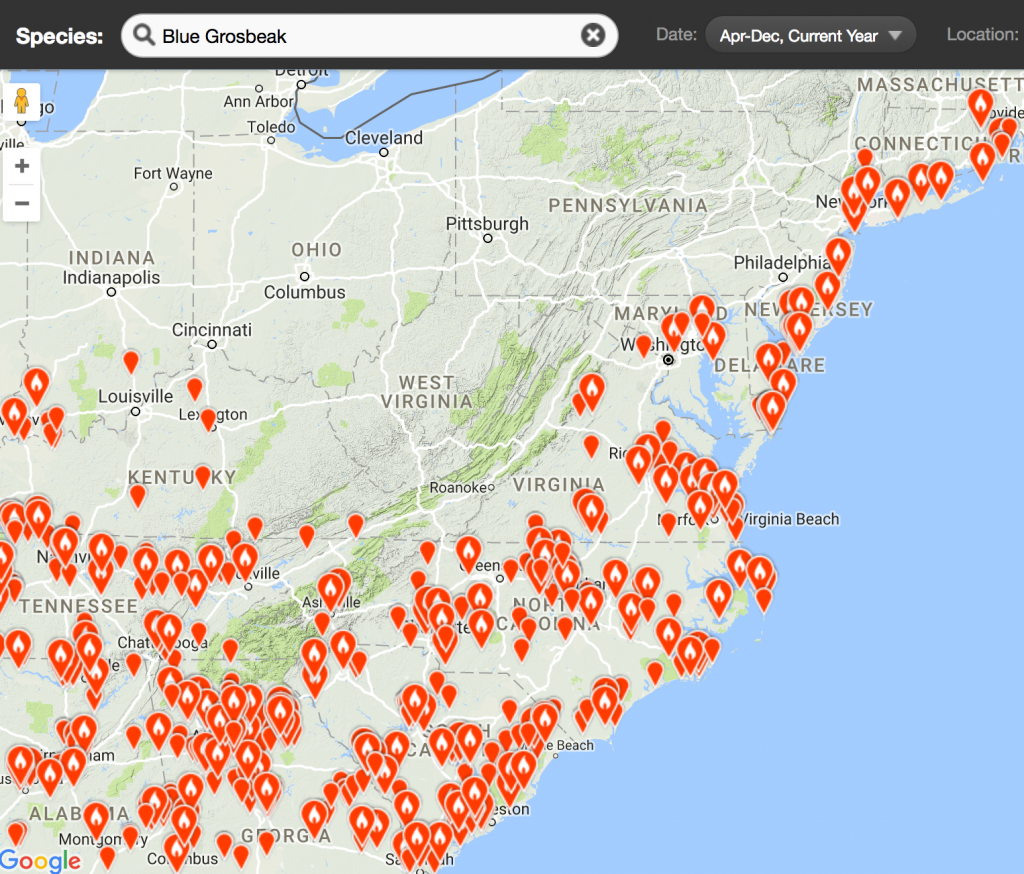
Blue Grosbeak eBird sightings through April 24. It’s hard to not wonder what is causing the extension of this species up the easternmost coast.
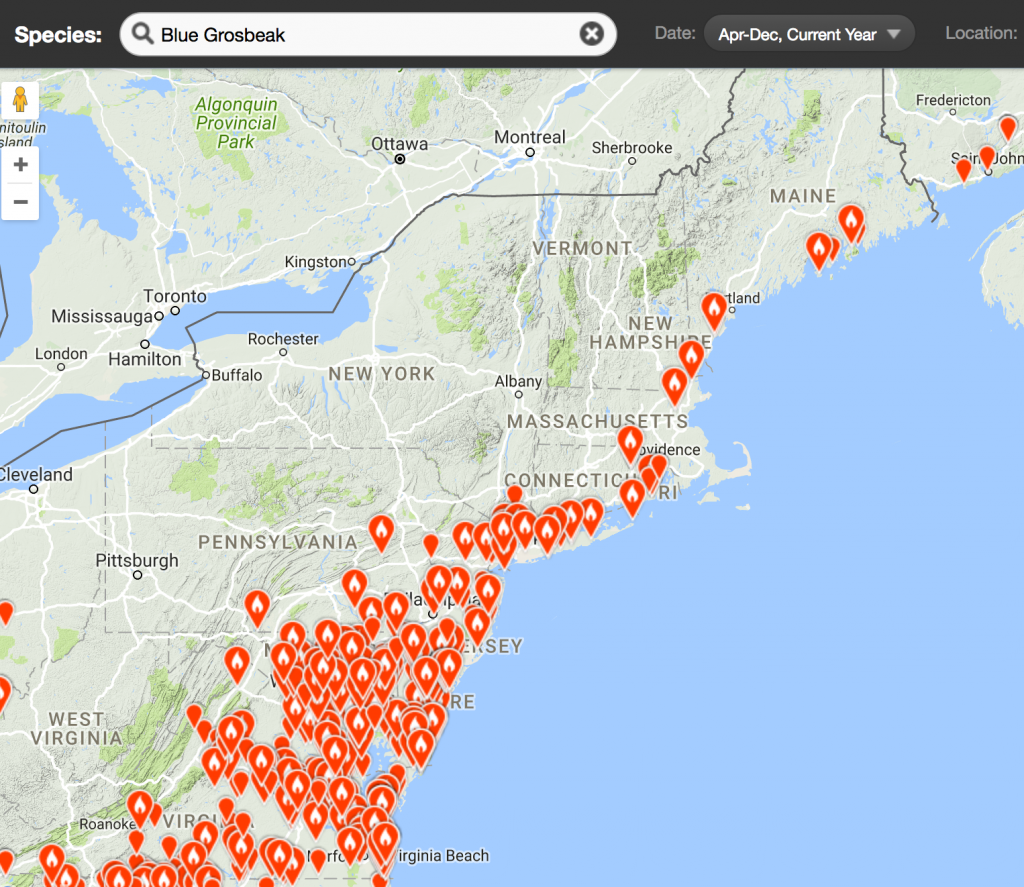
On May 2 the tail of coastal Blue Grosbeak sightings extends all the way from Connecticut into Canada.
This pattern could easily be dismissed as a single-species anomaly, except that a very similar pattern is observed with Summer Tanager.

Summer Tanager sightings up to April 19. Note the same coastal extension as was seen with Blue Grosbeak.
So there you have it. I don’t yet know what all this means, but there seem to be four patterns of sightings. It will be interesting to see how many species fall into these categories, and to know if the distributions occur similarly for these species each year. If anybody out there has ideas for why they are occurring, I’d love to hear them. Send your comments to greg@birdquiz.net.


